
Sailboat Bottom Paint: 10 Best Paints

Last Updated by
Daniel Wade
June 15, 2022
If you leave your boat without protection, it's beyond question that it will start attracting several marine organisms such as slime, algae, mussels, barnacle, and seaweed. This will cover the bottom of your sailboat and may negatively affect your boat's speed and fuel efficiency.
This is exactly why you need to apply the best sailboat bottom paint on your boat.
The freedom that sailing and being off land gives you are immense and almost unmatched.
But do you know that having multiple organisms such as algae, slime, barnacle, seaweed, and mussels grow on your boat can throw everything out on the wind and leave you with a very unreliable boat?
These pesky hangers will put a huge dent in your boat's speed, its movement, fuel efficiency, and overall aesthetic.
That's why you need the best sailboat bottom paint to greatly minimize any damage that might be caused to your boat's hull by marine biological growth.
Also known as antifouling paint, bottom paint is essentially a paint or coating that's specifically designed with elements that prevent various marine organisms such as algae, seaweed, barnacles, slime, and mussels from attaching themselves to your boat's hull or any other part of the boat that's below the waterline.
One of the most important elements of bottom paint is the inclusion of a biocide and copper is the most common. This may, however, depend on the type of boat that you have, how, and where you always use it.
But because there's an ocean of bottom paints out there on the market, choosing the best sailboat bottom paint can be an overwhelming task for most of us.
Fortunately, you can always count on us to make it a lot easier for you. We've gone through many bottom paints and we do not doubt that we've selected the most effective, reliable, and best sailboat bottom paint.
Our unbiased selections will not only match your needs and budget but will be available in a variety of colors to complement and augment your boat's visual appeal.
Table of contents

What to Consider when Purchasing Sailboat Bottom Paint
If you're on the market for the best sailboat bottom paint, it's crucial to go for top quality; something that will offer efficiency, top speed, and excellent performance for your sailboat. With that in mind, here are a few things to consider before spending your hard-earned money on bottom paint.
Your Sailing Location
Where are you planning to sail? Is it on a freshwater body or in a saltwater location? This is essential in helping you determine whether to go for a bottom paint that's meant for saltwater, freshwater, or both. It's generally recommended that you go for a bottom paint that will serve you perfectly well in both freshwater and saltwater. This gives you the versatility of sailing anywhere without worrying about marine organisms damaging your boat's hull.
Launch Time and Recoat Time
It's important to keep in mind that bottom paint products have specific launch time limits. The idea here is to ensure that you launch it within the required timeframe and ensure that recoating is done as required. You should, therefore, choose a bottom paint that offers a lengthy launch and recoat time while offering durable protection for your vessel is the right thing to do.
Type of Boat
You should determine whether your boat is made of wood, fiberglass, or aluminum and go for bottom paint that's suitable for that particular surface. Many bottom paints work perfectly with fiberglass but some work great with aluminum or wooden surfaces.
The Fouling Condition
Having a deeper idea of the type of fouling that you might deal with can be crucial when buying the right bottom paint for you. Whether you're dealing with slime, algae, mussel, or any other type of marine organism, knowing the type of fouling you're dealing with will make it a lot easier to pick the best sailboat bottom paint for your vessel.
Best Sailboat Bottom Paint
Rust-oleum marine flat boat bottom antifouling paint.
As one of the most respected brand names in the bottom paint industry, Rust-Oleum is known for producing some of the best sailboat bottom paint and the Marine Flat Boat Bottom Antifouling Paint is one of them. This bottom pain is designed to be suitable for various conditions (both freshwater and saltwater) and is designed with moderate copper that works great if you are environment-conscious.
This bottom paint does an excellent job of offering a protective coating to ensure that your boat is free of all sorts of unwanted marine organisms. You'll love this paint because it is thick and spreads so easily and will not be a problem even if you're a beginner. This bottom paint offers top-notch antifouling properties and is very easy to apply as long as you use a soft brush and mix it carefully. This is a great bottom paint choice that will offer a sleek multi-season finish and ensure that your boat's hull is always awesome and in great condition.
- Easy and simple to apply
- Great for both freshwater and saltwater
- Offers gentle fouling conditions
- Excellent in antifouling
- Offer a sleek and awesome finish
- Quite expensive
- Has a very strong smell that can cause headache
Interlux Fiberglass Bottomkote Antifouling Paint
This is another great brand that is considered as one of the best bottom paint in the sailing world. Even though it's a bit pricey, it offers great features that will ensure that your boat remains in tip-top shape. It is an excellent option if you're looking for a sailboat bottom paint that brings to the fore a unique dual resin approach.
This is a very reliable bottom paint that will not only prevent your boat's hull from the effect of marine organisms but also prevent premature deterioration. It offers an awesome polishing action and is perfecting if you want to discard unnecessary paint buildup. This bottom paint is also very economical and a small quantity will cover a considerable surface area of your boat's bottom.
This is, without a doubt, a superb buy in terms of its practicality and economical nature. It is excellently formulated to prevent marine organisms from damaging your boat and also to ensure that premature wear and tear doesn't exist in your vocabulary.
- It's formulated with a unique dual resin approach to prevent premature wear and tear
- It prevents early decline
- It prevents unnecessary paint buildup
- Great for ensuring that your boat is fuel effective
- Great for all conditions (both freshwater and saltwater)
- It's expensive
- The quantity and size can be misleading
TotalBoat JD Select Bottom Paint
As one of the few bottom paints that's formulated with low Volatile Organic Compounds (VOC), this bottom paint is one of the most cost-effective on this list. With one gallon, you can easily cover about 400 square feet and the application is a breeze since it's even much easier to clean up.
When you purchase this bottom paint, the package will come complete with a pair of latex gloves, a wooden stir stick, an abrasive pad, a metal tray kit, a paint suit, a roller, a painter's tape, and many more. The inclusion of all these accessories makes it a quite cost-effective purchase.
Again, this is one of the most durable bottom paints. Apply it on your boat's hull and you're guaranteed that it will offer excellent protection for the next 18 months. On the downside, this paint is too thick and you'll have to buy an excellent thinner for it to work perfectly.
Nonetheless, this is an ablative bottom paint that is easy to apply and does an excellent job of protecting your boat's bottom for close to two years.
- Perfect for all conditions
- Easy to apply and clean up
- Can improve your boat's speed and fuel efficiency
- Comes with all accessories required for the paint job
- It's one of the best water-based bottom paint products in the industry
- It contains low VOC
- You'll need a top-quality thinner for it to work perfectly
Aquaguard Water-based Antifouling Bottom Paint
An excellent choice for both wooden and fiberglass boats, this is the most perfect bottom point for saltwater conditions. This is a water-based bottom paint that's very easy to apply and clean up (using soap and water) and is formulated with an ablative action that makes it superb for preventing any marine organism that may negatively affect your boat.
This is a bottom paint that is EPA-approved and surpasses the set VOC standards. It has an extended shelf life and offers durable protection for your sailboat. It doesn't contain toxic fumes and is great even for novices. Its drying time is also excellent, so you won't wait for far too long to get your boat out there on the water.
- Excellent for saltwater conditions
- Application and cleaning is very easy
- It's approved by the US EPA
- You don't have to use a primer
- The color selection is limited
- A bit pricey
Pettit Hydrocoat
This is another water-based bottom paint that offers outstanding ablative properties that will protect your boat from marine organisms throughout the seasons. It offers good value for money and is easy to apply and clean up with just water and soap.
We're talking about a bottom paint product that will protect your boat's hull for months on end. You also do not need a full tank of the paint to complete the job. With just a single gallon, you can be sure to complete an area as big as 430 square feet.
This is also one of the few bottom paints that can perfectly prevent your boat from damage when being trailered, launched, or beached. More importantly, it's not irritating to the nose and eyes because it has low VOC.
- It will dry in 3 hours
- It's easy to apply and clean up
- It offers multi-season protection
- It's not irritating to the eyes and nose
- It's quite economical
- May not be the best in antifouling
- You have to apply at least two coats
SEA HAWK PAINTS Aluminum Boat Paint
One of the best aluminum boat paints in the market, this bottom paint is formulated to offer quick-dry corrosion-blocking, high-solid features. This bottom paint is specifically manufactured to be used in aluminum boats and doesn't require the addition of any primer.
While it doesn't have an antifouling feature, it stands out and can be used both below and above the waterline as it is risk-free and free or chromate. It is also formulated to offer a unique dual resin approach and can be used both as paint and a primer at the same time.
This is a great paint for both freshwater and saltwater conditions and can be applied as a primer or topcoat on a fiberglass boat. This is an excellent sailboat boat bottom paint that's worth every coin as it is practical, versatile, and can combat both rusting and lifting.
- The application and cleanup process is easy
- Great for both freshwater and saltwater conditions
- It doesn't require a primer
- Can be used as primer or topcoat in fiberglass boats
- Can prevent rusting and lifting
- It has quick-dry and anti-corrosion features
- Can produce deadly fumes
TotalBoat Spartan Boat Bottom Paint
If you've been looking for a practical, reliable, and cost-effecting bottom paint that will offer durable performance and protection, the Spartan Boat Bottom Paint. Perfect for both freshwater and saltwater, it can be perfect for protecting your boat and ensuring that it is fuel-efficient and reliable.
This bottom paint is formulated with advanced copolymer ablative to ensure that it doesn't deteriorate instantly. This is a very dependable bottom paint that will serve you perfectly throughout the year and will ensure that your boat easily defies fouling while reducing unnecessary buildup and sanding on your boat.
This is a very adaptable bottom paint that not only offers great value for money but is very easy to apply. More importantly, it is very durable and will protect your vessel for at least 12 months on any type of water.
- Great for all types of water
- It offers a very durable protection
- Available in a wide variety of color selection
- Offer a visually appealing abrasion-proof finish
- The included accessories aren't up to the right quality
To this end, we must put a lot of emphasis on the importance of having the right bottom paint for your boat. In addition to being an antifouling agent, bottom paint will significantly increase the fuel efficiency of your boat and ensure that it performs optimally at all times. Of course, you do not want to diminish your sailing escapades or have your nice and beautiful vessel damaged by marine organisms just because you didn't apply the right sailboat bottom paint. If you're unsure how to proceed, here's how to paint a sailboat.
Related Articles
I've personally had thousands of questions about sailing and sailboats over the years. As I learn and experience sailing, and the community, I share the answers that work and make sense to me, here on Life of Sailing.
by this author
Repairs and Maintenance
Sailboat Upgrades
Most Recent

What Does "Sailing By The Lee" Mean?
October 3, 2023

The Best Sailing Schools And Programs: Reviews & Ratings
September 26, 2023
Important Legal Info
Lifeofsailing.com is a participant in the Amazon Services LLC Associates Program, an affiliate advertising program designed to provide a means for sites to earn advertising fees by advertising and linking to Amazon. This site also participates in other affiliate programs and is compensated for referring traffic and business to these companies.
Similar Posts

How To Choose The Right Sailing Instructor
August 16, 2023

Cost To Sail Around The World
May 16, 2023

Small Sailboat Sizes: A Complete Guide
October 30, 2022
Popular Posts

Best Liveaboard Catamaran Sailboats
December 28, 2023

Can a Novice Sail Around the World?
Elizabeth O'Malley

4 Best Electric Outboard Motors

How Long Did It Take The Vikings To Sail To England?

10 Best Sailboat Brands (And Why)
December 20, 2023

7 Best Places To Liveaboard A Sailboat
Get the best sailing content.
Top Rated Posts
Lifeofsailing.com is a participant in the Amazon Services LLC Associates Program, an affiliate advertising program designed to provide a means for sites to earn advertising fees by advertising and linking to Amazon. This site also participates in other affiliate programs and is compensated for referring traffic and business to these companies. (866) 342-SAIL
© 2024 Life of Sailing Email: [email protected] Address: 11816 Inwood Rd #3024 Dallas, TX 75244 Disclaimer Privacy Policy
Free Shipping On All Orders!
- Epoxy Resins
- Polyester Resin
- Urethane Resins
- Epoxy Project Supplies
- Antifouling Paints
- Topside Paints
- Thinners & Solvents
- Paint Supplies
- Wood Oils & Finishes
- Wood Finishing Supplies
- Cleaning & Polishing
- Accessories
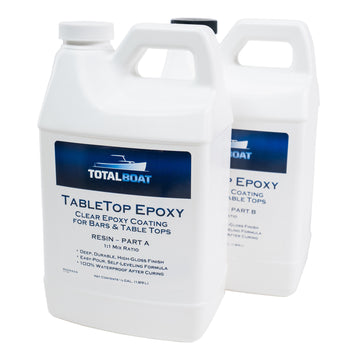
Table Top Epoxy
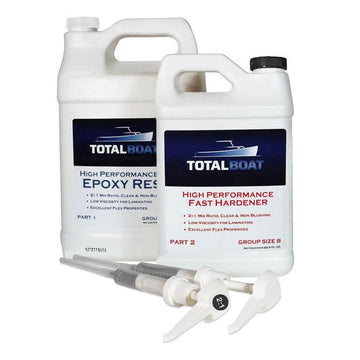
Clear High Performance Epoxy Kits
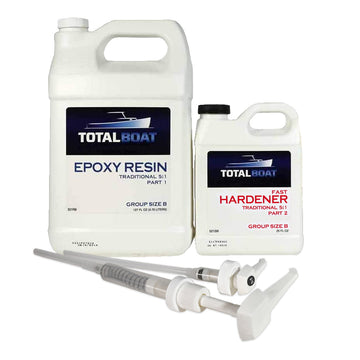
5:1 Traditional Epoxy Resin Kits
- Thinners & Solvents
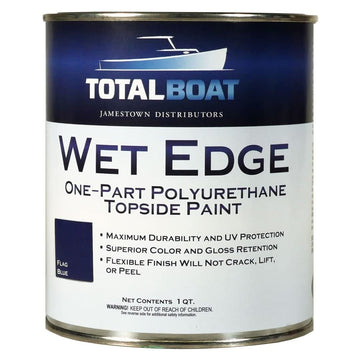
Wet Edge Topside Paint
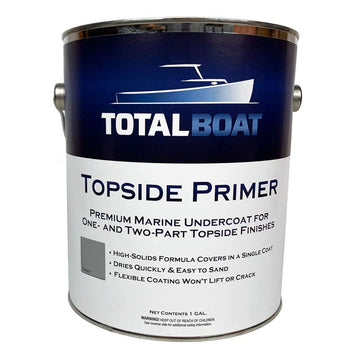
Premium Marine Topside Primer
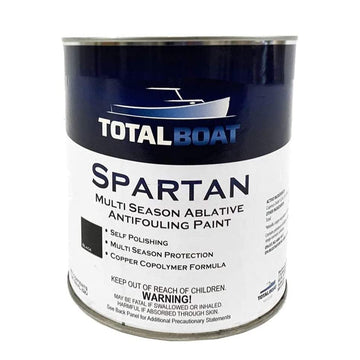
Spartan Multi-Season Antifouling Paint
- Wood Finishes
- Wood Oils & Finishes
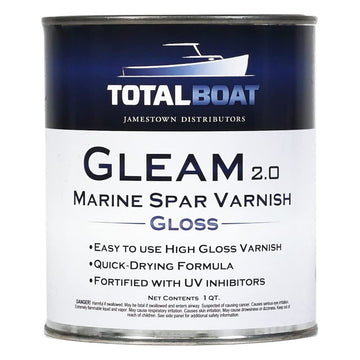
Gleam Marine Spar Varnish
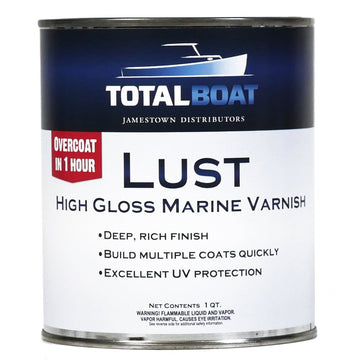
Lust Rapid Recoat Marine Spar Varnish
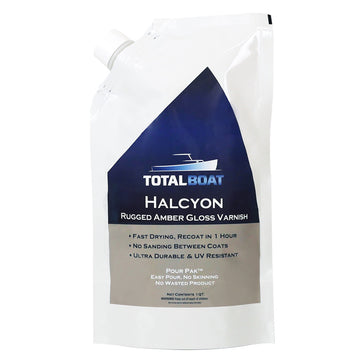
Halcyon Water-Based Marine Varnish
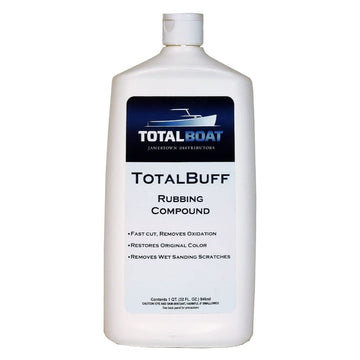
TotalBuff Rubbing Compound
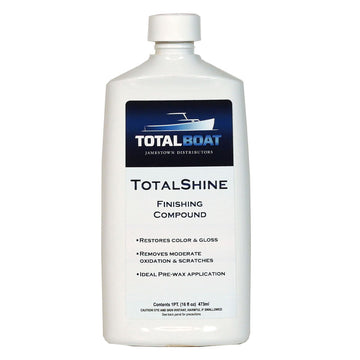
TotalShine Finishing Compound
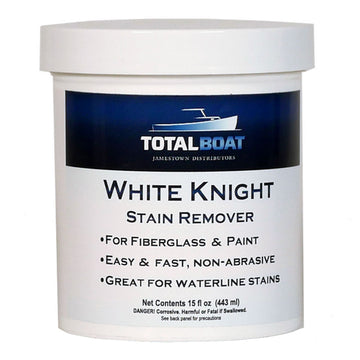
White Knight Fiberglass Stain Remover
- TotalBoat Gear
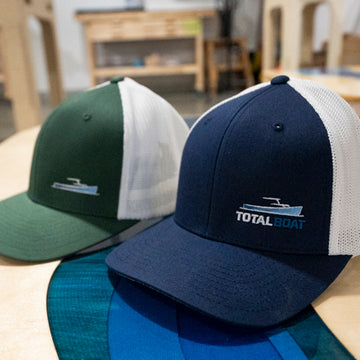
FlexFit Fitted Mesh Back Baseball Cap
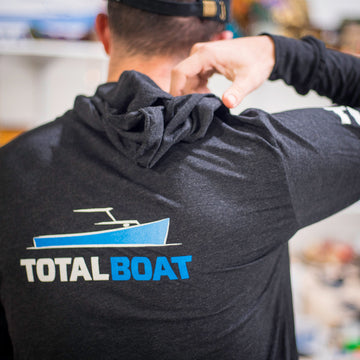
Men’s Long Sleeve T-Shirt Hoodie
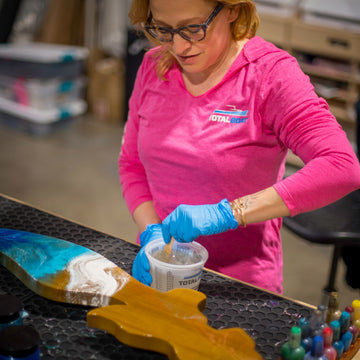
Women’s Long Sleeve T-Shirt Hoodie
FREE SHIPPING with a minimum puchase of $1,200.00 You are $10.00 away from your free shipping!
Shipping, taxes, and dicount codes calculated at checkout.
Which Bottom Paint Should I Use?
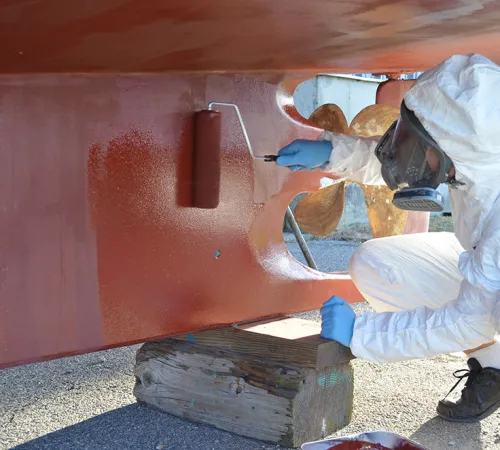
What is Boat Bottom Paint?
Bottom paint is applied below the waterline on your boat, and typically refers to antifouling paint that prevents marine growth from clinging to your hull. Barnacles and slime can slow you down and increase your fuel costs because the engine has to work harder to move your boat through the water. A bottom full of barnacles and weeds can also put you in harm’s way because it can seriously hamper your ability to maneuver.
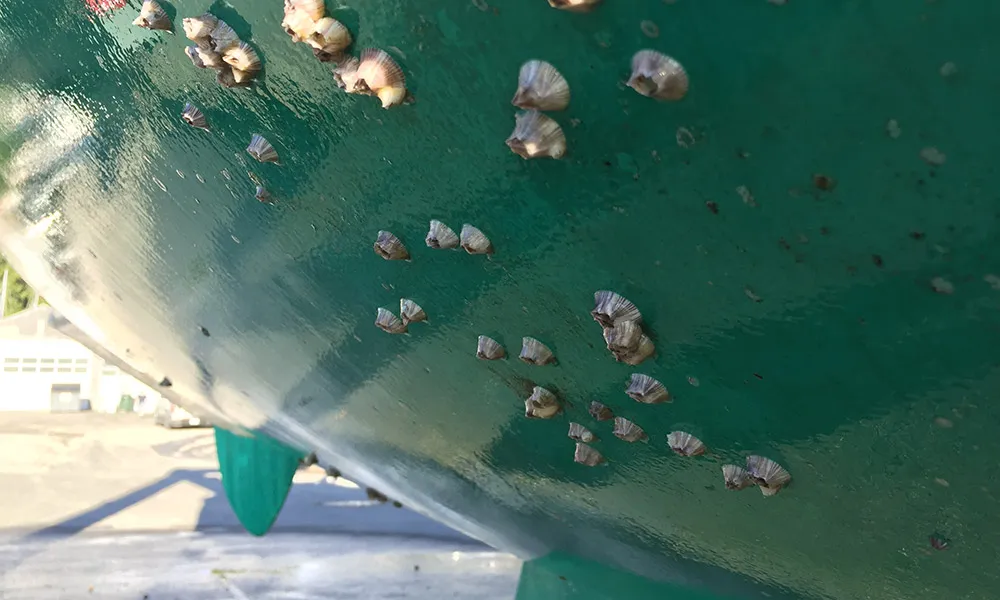
The key antifouling ingredient is some type of biocide for deterring hard marine growth such as barnacles and mussels. Some antifouling paints also include an algaecide for preventing soft growth like algae, slime and weeds. There are many different antifouling coatings, making it hard to choose the paint that’s right for your boat and your budget. Some coatings work better in different locations, including fresh or salt water. Some are more environmentally friendly than others, and some cost more based on the amount and type of biocide, and the protection they provide.
Do I Need Bottom Paint on My Boat?
If you pull your boat out of the water every time you use it, you probably don’t need bottom paint. But if you keep your boat in the water all season, or if you take your boat out of the water periodically, such as on a trailer or lift, then yes, you should apply bottom paint to prevent hull fouling. Same goes whether you keep your boat in salt water or fresh water.
What are the Different Types of Antifouling Paints?
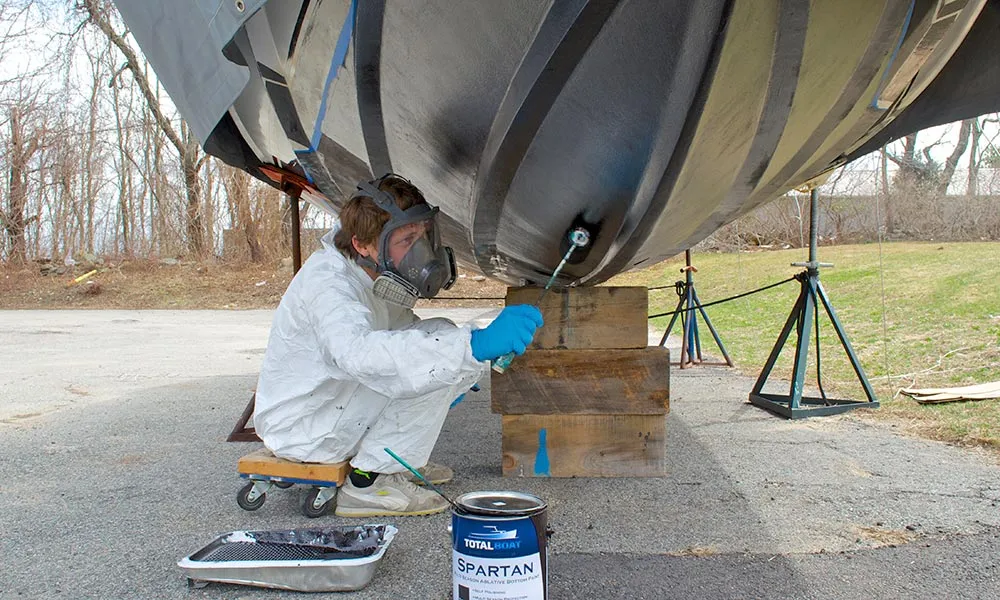
All bottom paints are not the same and will not be effective for all boats, in all waters and fouling conditions, and for all types of boating. Bottom paints are usually one of two types: hard or ablative, with variations that are effective based on how much time the boat spends in the water and how often it moves. For example, hard bottom paints are effective for a single season, and they build up season after season, eventually requiring costly removal. Ablative paints come in single-season and multi-season varieties and don’t build up.
Ablative Bottom Paint
Ablative paint is designed to gradually wear away as water flows beneath the hull, either from use or from the movement of tides and currents. Fresh biocide is exposed as the paint layers wear away, preventing marine fouling organisms from attaching to the surface. Some ablative paint formulas are for multi-season use, and some are effective for only a single season. Also, ablative bottom paint can be copper-based or copper-free, and water-based or solvent-based. For most ablative paints to work effectively, motion is required, so this paint is best if you use your gets frequent use.
Self-Polishing Copolymer Ablative Bottom Paint
This type of antifouling paint also wears away gradually to expose fresh layers of biocide, but the self-polishing properties of its controlled-release copper copolymer formula make it work whether the boat is at anchor or underway. Some copolymer ablatives are effective for multiple seasons, and need only a light scuffing to reactivate the antifouling in the spring, just before launching.
Hybrid Copolymer Ablative Bottom Paint
Hybrid bottom paints are self-polishing and release biocides at a controlled rate like copolymer bottom paints do, but hybrid paints can be burnished–like a hard bottom paint–for smoothness and speed. Unlike hard bottom paints, hybrid paints have less buildup to remove next season.
Hard Bottom Paint
A hard bottom paint coating doesn’t wear away like an ablative coating does, it just loses its biocide over time. The biocide in hard bottom paints leaches constantly while the boat is in the water, whether the boat is moving or not. Hard paints lose their effectiveness once all the biocide leaches out. Because hard bottom paint doesn’t wear away, it builds up and has to be sanded down before reapplying bottom paint the next season. Also, hard bottom paints generally become rendered inactive one the boat is hauled out of the water, so they’re best for boats that remain in the water for extended periods. They’re also ideal for racing boats or boats operated at faster speeds because the hard paint coating can be burnished to increase smoothness and speed.
Questions to Answer Before Buying Bottom Paint
What is my boat made of.
When it comes to choosing bottom paint, substrate (surface) is a big consideration. Do you have an aluminum, fiberglass, steel or wooden boat? Most bottom paints contain some type of copper biocide, which is suitable for fiberglass and wooden boats, but not for aluminum. The copper in the paint causes galvanic corrosion, which will destroy an aluminum boat or pontoon boat. For antifouling protection on aluminum boats and underwater metal parts, you have to apply a copper-free bottom paint .
Inflatable boats made of PVC, Hypalon or other materials also need bottom paint if they’re left in the water for long periods. Ablative bottom paints designed for inflatable boats won’t crack after drying or peel while you’re rolling up the inflatable for storage.
Where Do I Use or Keep My Boat? Location is Everything!
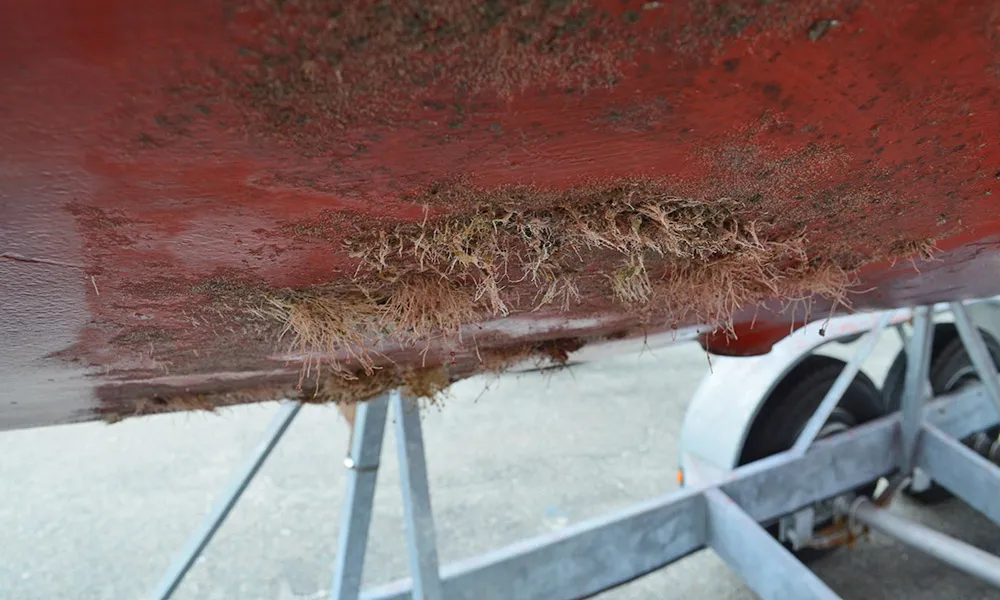
What are the fouling conditions in your area? By ‘area’ we mean not only the geographic location, but the specific harbor, and even your location in the harbor. Why? Because the fouling conditions can be that location-specific. Is the fouling light, moderate, or heavy in your part of the harbor? Typically, more biofouling occurs in waters that are warm and still, rather than colder waters where water flow is unrestricted.
Is My Boat in Fresh Water or Salt Water?
Barnacles, algae and slime are the bane of boat owners who do their boating in salt water. And even though boats left in freshwater don’t have to worry about barnacles, they can still get slimy and grow green beards. If algae slime and algae are a problem, you’ll want a paint that contains an algaecide such as zinc pyrithione (this applies to copper-free biocides, too). If you do your boating in freshwater lakes, look for bottom paints designed specifically for freshwater fouling. Why pay for extra protection you don’t need?
How Often Do I Use My Boat?
If you use your sailboat or power boat frequently, ablative bottom paint is a great choice because it’s most effective when the boat moves through the water to release fresh biocide. If you don’t use your boat as often and it spends a lot of time at the doc or on the mooring, your best bet would be a self-polishing copolymer paint that’s effective whether the boat is moving or not. In addition, brief boating seasons are suitable for a single-season antifouling paint , but for a longer boating season, it can be more effective and economical to apply a multi-season bottom paint . If you trailer your boat, a harder ablative antifouling paint that can withstand trailering and beaching might be the way to go.

Do I Want to Use My Boat for Racing?
If you want to race your boat or you just want to make your boat go faster, use a thin film bottom paint, a hard modified epoxy bottom paint, or a hybrid bottom paint that can be burnished. Burnishing involves wet sanding or using a Scotch-Brite® pad to make the surface smoother.
Should I Use Solvent-Based Bottom Paint or Water-Based Bottom Paint?
Environmental restrictions in some areas prohibit the use of solvent-based paints due to their high VOC (volatile organic compound) content. If this is the case, you can apply a water-based, low VOC bottom paint . Water-based bottom paint offers easy cleanup and is very effective against marine fouling.
A common misconception about water-based bottom paint is that it will dissolve and leave the hull with no antifouling protection once the boat is in the water. Not true. Once cured, the water in water-based bottom paint evaporates and leaves a protective film containing the biocide.
Should I Use Copper-Based or Copper-Free Bottom Paint?
Again, environmental restrictions may dictate the use of copper-free antifouling bottom paint. Typically, a higher percentage of copper in the paint means it’ll be more effective at combating shell fouling. But copper-free bottom paint containing the eco-friendly biocide Econea™ (tralopyril) has proven very effective on shell fouling such as acorn barnacles and zebra mussels. If you have an aluminum boat, you have to use a copper-free antifouling paint to avoid galvanic corrosion, which will destroy aluminum. Underwater metals also need bottom paint that’s copper free .
What Type of Bottom Paint is on My Boat Now?
If there’s bottom paint on your boat now, it’s really important that your new bottom paint is compatible with the old bottom paint. You don’t want your new paint to peel, so you need to find out what the previous paint is. If you can’t determine that, you’ll need to strip off the old paint completely and start over. Antifouling paint formulas change often, but here are some general compatibility and surface preparation guidelines. For best results, read the bottom paint manufacturer’s recommendations.

How Much Do I Want to Spend On Bottom Paint?
Typically, the higher concentration of biocide a bottom paint has, the more expensive it will be. Hard bottom paints are typically less expensive than ablative antifouling paints. Among the ablative marine paints, the single-season ablatives are typically less expensive than the multiple season ablatives.
How Much Bottom Paint Do I Need?
The amount of bottom paint varies depending on how big your boat is and how heavily you apply the bottom paint. Refer to the paint manufacturer’s details on coverage amounts (typically given in square feet per gallon). Here’s an easy formula for figuring out the square footage of your hull below the waterline, where you’ll be applying bottom paint.
Length (in feet) x Beam (in feet) x .75 Here are some typical estimates for various types of boats. These estimates assume you’re applying two coats, and that you’ll be coating the surface as thickly as possible without drips or runs.
How Often Should I Bottom Paint My Boat?
How long does boat bottom paint last? Depends on the type of bottom paint you use and your boating conditions. Typically, you should apply bottom every year, but there are some bottom paints that last multiple seasons. If you use your boat regularly or keep it in the water, check it every year to see if you need to reapply bottom paint.
Hints to Help You Choose the Right Bottom Paint for Your Boat
- Ask other boaters in your local marina – they’re a prime source of information about what works and what doesn’t in your particular location.
- If you want to paint in the fall and launch in spring without repainting, choose a multi-season self-polishing copolymer paint . This type of bottom paint has an unlimited launch window.
- All bottom paint manufacturers have a chart that shows the compatibility of their bottom paints with those of existing brands. Be sure to take a look at the compatibility chart before you buy.
Leave a comment
Related articles.

Celebrate National Safe Boating Week with Total...
As the boating season kicks into high gear, National Safe Boating Week (May 18-24) serves as an essential reminder for all boaters to refresh their boating safety knowledge and ensure...
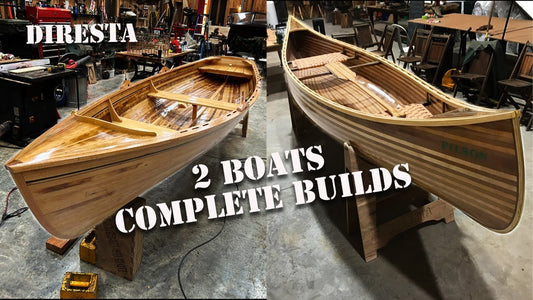
From Woodworker to Shipwright: Jimmy DiResta's ...
Woodworking superstar Jimmy DiResta has ventured into the world of boat building over the past few years, showcasing his unparalleled creativity and craftsmanship in two captivating projects. In his latest...
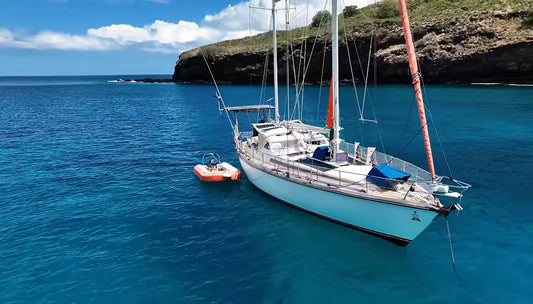
A Dinghy Makeover Story with SV Delos
In the realm of sailing adventures, every vessel holds a unique tale, and for the crew of SV Delos, their trusty aluminum dinghy, lovingly named Maggie, has been a steadfast...
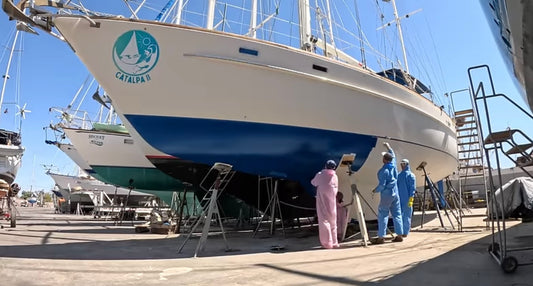
Bottom Paint Makeover with Sailing Catalpa
Ahoy, fellow adventurers! Meet Sailing Catalpa: a family of 4, who bought a 44 ft Ferro Cement Wilf O'Kell sailboat in 2014, and packed up their lives in Australia to chase their...
- Choosing a selection results in a full page refresh.
Boat Reviews
- Boats Specs
- Marine Pros
- Boat Insurance
- Boat Warranties
- Boat Transport
- Boat Towing
- Marine Forecasts

Your Ultimate Boating Resource

Sailing Smoothly: The Best Guide to Selecting the Perfect Bottom Paint for Your Boat

Maintaining your boat’s performance and longevity is deeply anchored in the choice of the right bottom paint. It’s not just about aesthetics; it’s about creating a shield against marine life that can slow you down.
Dive into this all-encompassing guide to discover how the right bottom paint, tailored to your boating lifestyle, can make a world of difference.
The Vital Role of Bottom Paint
Think of your boat’s hull as a warrior in constant battle against underwater foes. Without bottom paint, it’s vulnerable to fouling, which can lead to reduced speed and efficiency. The secret weapon? Bottom paint infused with biocides that repel these unwelcome guests, keeping your hull sleek and swift.
Exploring the Seas of Bottom Paint Choices
Navigating the world of bottom paints can be like sailing through uncharted waters. There’s hard paint for the long haul, ablative paint that gracefully wears away with use, and even eco-friendly options that embrace green sailing. Each type has its unique strengths, so your choice should reflect your nautical needs.
The Copper Conundrum
Copper-based paints have long been the go-to for their fouling-fighting prowess. But as we become more conscious of our environmental impact, it’s important to weigh the effectiveness against potential ecological concerns.
Tailoring Paint to Your Boating Style
Your boating habits are the compass that guides your choice of bottom paint. Whether you’re leisurely cruising or racing against the wind, there’s a paint that aligns perfectly with your aquatic adventures:
Cruising Boats
With sleek and sturdy boats, their hulls coated in durable paint, resist the corrosive forces of time and tide. These vessels offer unwavering protection, allowing you to sail confidently through any weather conditions.
Racing Boats
For those seeking speed, ablative paints provide a slick and clean surface that is crucial for cutting through the waves. Their sleek, streamlined bodies sliced through the water with precision and speed. Each boat was coated in a shimmering layer of ablative paint, creating a smooth and clean surface that was essential for achieving maximum velocity.
Factors to Navigate When Choosing Paint
The waters you sail, the material of your hull, and even local laws are crucial markers in your journey to the perfect paint:
As you glide through the vast expanse of ocean, the type of water beneath your boat plays a crucial role in determining the ideal paint for your vessel. The crystal clear waters of a freshwater lake call for a different coating than the salty waves of the open sea. And even the laws and regulations of the local area can impact your choice of paint.
Hull Material
Selecting the hull material for your boat is like choosing a vessel as a sailor. The material you choose will play a crucial role in determining which type of paint will adhere best and provide optimal protection for your boat. Think carefully about your options, for the material itself can greatly impact the performance and longevity of your watercraft on the open seas.
DIY or Professional
Taking on a DIY project can be both exciting and daunting. Are you confident in your skills to paint your own ship, or will you leave it to the professionals? Consider the type of paint you choose–some are more forgiving for those without professional experience. As you set out on this endeavor, envision yourself as a deckhand navigating rough seas, armed with your chosen brush and paint, ready to transform your ship into a masterpiece.
Local Rules of the Sea
As you sail the open sea, always keep a vigilant watch on the horizon for any local regulations that may dictate your voyage. Pay special attention to any restrictions regarding copper-based options, as they may affect your journey in unexpected ways. Stay informed and navigate confidently to ensure smooth sailing ahead.
Final Thoughts
Your boat is more than a vessel; it’s a testament to your passion for the sea. Choosing the right bottom paint is a crucial step in ensuring it remains your faithful companion on countless voyages. With a keen understanding of the types of bottom paint and a thoughtful consideration of your boating style and environment, you can set sail confidently, knowing your boat is as ready for adventure as you are. Keep your hull in prime condition, and the sea will always welcome you with open arms.
RELATED ARTICLES
2024 pursuit os 445: an overview, dock your boat smoothly this summer with these tips, the billionaire’s playground: where to spot superyachts around the world, summertime snack ideas for your boating adventure, de-winterize your boat the right way with these professional tips, latest posts, don't miss, our newsletter.
Get the latest boating tips, fishing resources and featured products in your email from BoatingWorld.com!
What type of wood is used for pier pilings?
What is the difference between a dock and a floating pier, what is the proper technique for pulling a beginner wakeboarder, what does ‘no wake’ mean on a lake, what is the difference between wash and wake, 10 essential tips for fishing near private property, the benefits of using a drift sock: guidance for anglers, lure fishing: secrets for imitating live bait and attracting fish, explore the untapped depths of america’s best bass fishing spots, tackle your catch-and-release adventures with these 6 tips, outboard motor maintenance: tips for keeping your engine in top shape, the essential boat tool kit: tools every boater needs, diy boat building: 8 tips and tricks for building your own vessel, the art of miniature maritime craftsmanship: ship in a bottle, antifouling paints: a guide to keeping your boat shipshape, beginner’s guide to standup paddle boarding: tips and techniques, boating for fitness: how to stay active on the water, kayak safety: how to stay safe on the water, anchoring in a kayak or canoe: how to secure your small boat, 2024 aquila 47 molokai review, 2024 sea-doo switch 13 sport review, 2024 aspen c120 review, 2024 yamaha 222xd review, 2024 sailfish 316 dc review, 2023 seavee 340z review, 2023 centurion fi23 review, gear reviews, megabass oneten max lbo jerkbait review, fortress anchors fx-7 anchoring system review, fortress anchors fx-11 anchoring system review, fortress anchors commando anchor kit review, fortress anchors aluminum anchors review, stay in touch.
To be updated with all the latest news, offers and special announcements.
- Privacy Policy
- 2024 BOAT BUYERS GUIDE
- Email Newsletters
- Boat of the Year
- 2024 Freshwater Boat and Gear Buyers Guide
- 2024 Boat Buyers Guide
- 2024 Water Sports Boat Buyers Guide
- 2024 Pontoon Boat Buyers Guide
- Cruising Boats
- Pontoon Boats
- Fishing Boats
- Personal Watercraft
- Water Sports
- Boat Walkthroughs
- What To Look For
- Watersports Favorites Spring 2022
- Boating Lab
- Boating Safety

Choosing the Best Bottom Paint
- By Lenny Rudow
- March 7, 2022
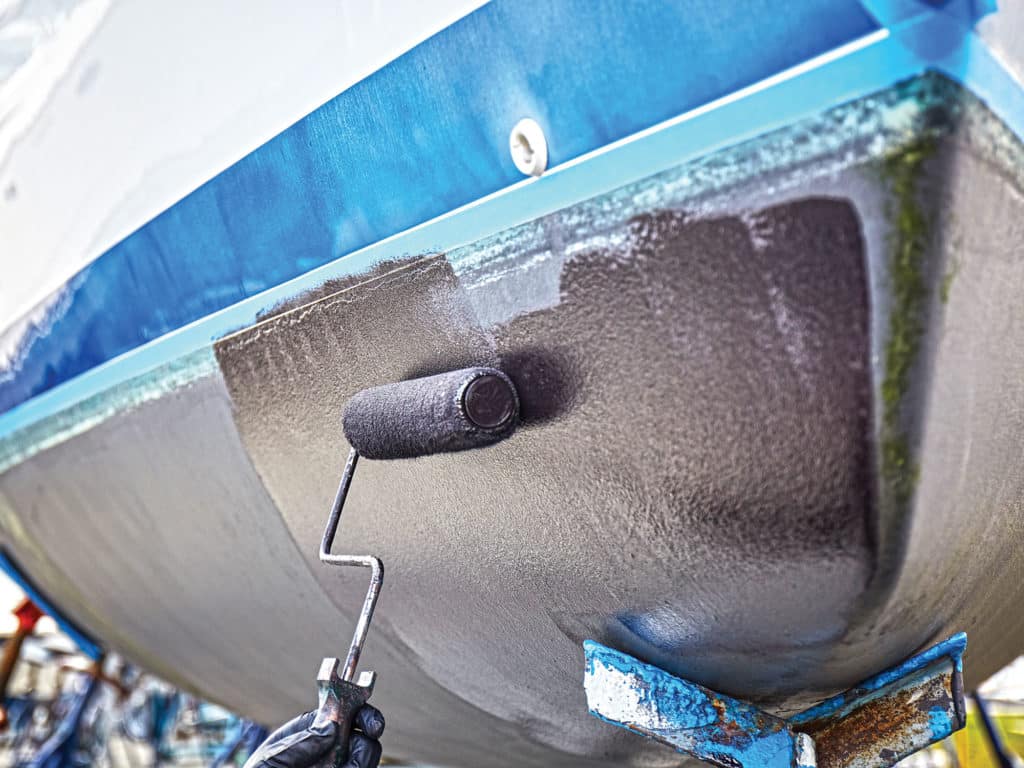
Struggling with a bottom-paint dilemma? We’re here to help. There are a lot of different bottom paints out there, so choosing the best antifouling coating for Mom’s Mink can be a challenge. To find out how to make the best choice, we spoke with the pros at West Marine. The most important factors are where you boat and how you use it.
Whether you boat in fresh or salt water and what sort of specific fouling factors exist in your home waters are critical factors. As a result, certain paints are popular in specific geographic areas. Finding out what’s prime in your neck of the woods is as easy as asking.
“We’ve institutionalized this type of information within our associate base,” says Chris Tysdal, merchandise planner for maintenance at West Marine. “As long as a customer can define the type of water and area, what kind of boating they’re doing and performance characteristics, our associates and website do a great job of getting them where they need to go.”
How does the kind of boating you do affect your choice? “There are three main paint technologies,” Tysdal explains. “Ablatives shed material as the boat moves and are self-polishing, so they won’t build up over time, but the boat needs to be used frequently. If you paint with an ablative and don’t use your boat often, you may experience growth. Hard paints work whether you use your boat a lot or a little, but they build up over time and eventually need to be sanded down, which can be a tough project. Hybrids can give you the best of both worlds in terms of performance but lack the longevity of a hard paint or a multiseason ablative antifouling.”
Then there’s trailering and launching to consider. Certain paints are fine for pulling and relaunching a boat frequently, but others are not. Tysdal points out that performance-boat owners have their own special needs. “In recent years, bottom-paint producers have made specific paints [such as Pettit’s Black Widow] that dry super smooth, and seasonal PTFE paints such as Interlux’s VC-17 that go on thin and will be very slick.”
Finally, for many green-thinking boaters, there are two more factors to consider: the base of the paint and the biocide. “Water-based paints such as Hydrocoat, Micron WA or West Marine’s BottomShield are easier on the environment,” Tysdal says. “As far as biocides go, you’re looking for paints that use ECONEA, pyrithione zinc or cuprous thiocyanate. These are either nonmetallic or have much shorter half-lives than traditional biocides, meaning their long-term impacts are much smaller.”
- More: boat maintenance , bottom paint , How-To , What to Look For
More How To

On Board With: Brian Grubb
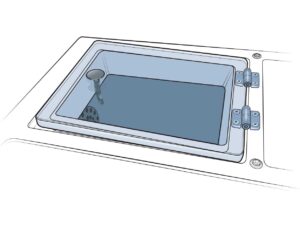
Installing Clear Acrylic Livewell Lids
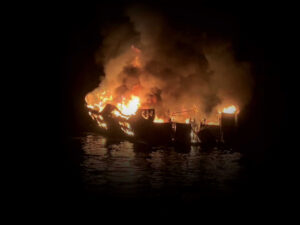
Captain of Dive Boat That Caught Fire Sentenced to Four Years
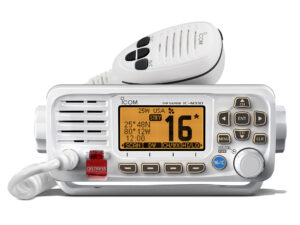
How to Make DSC Fully Functional on a VHF Radio
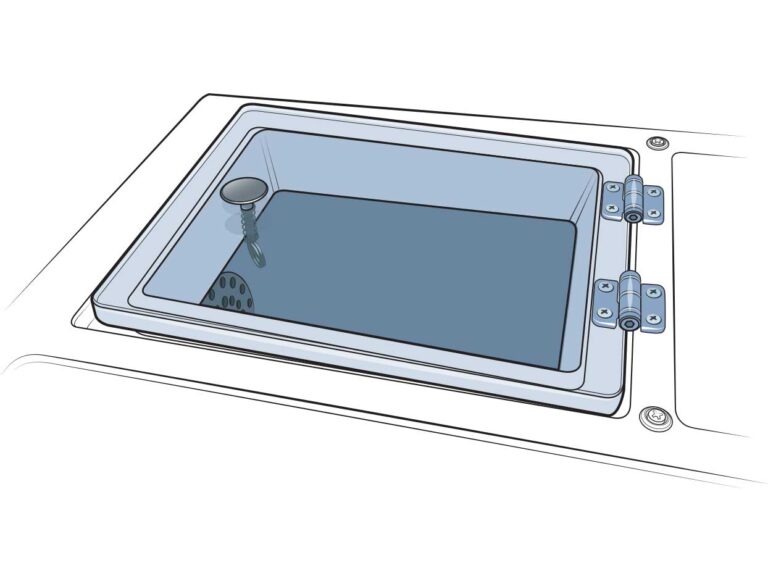
Boat Test: 2024 Solara S-250 DC
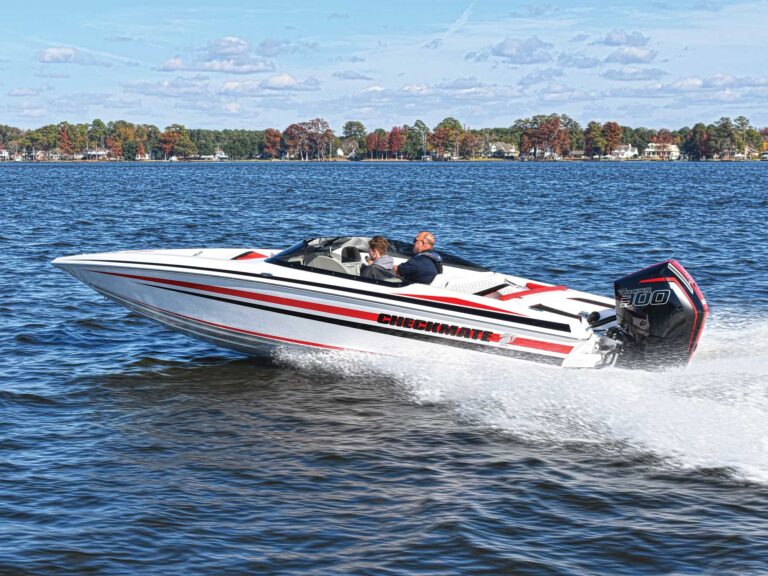
Boat Test: 2024 Checkmate Pulsare 2400 BRX
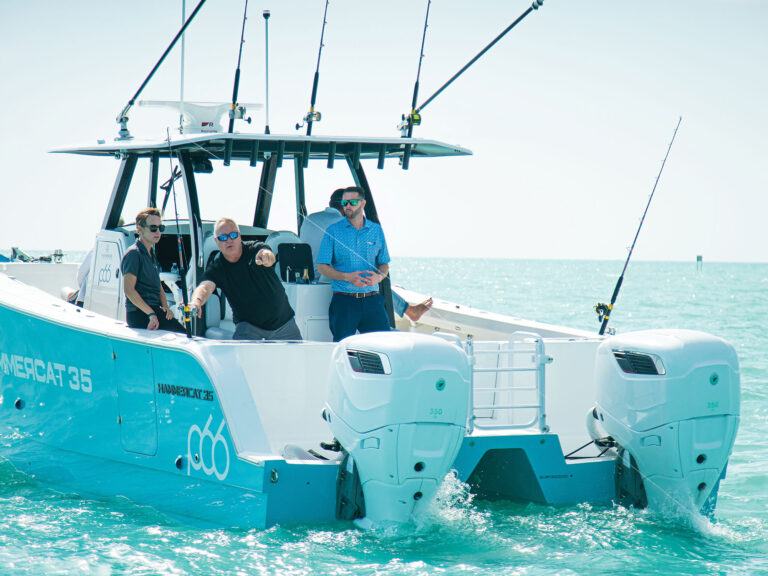
Cox 350 Diesel Outboard

- Digital Edition
- Customer Service
- Privacy Policy
- Cruising World
- Sailing World
- Salt Water Sportsman
- Sport Fishing
- Wakeboarding
Many products featured on this site were editorially chosen. Boating may receive financial compensation for products purchased through this site.
Copyright © 2024 Boating Firecrown . All rights reserved. Reproduction in whole or in part without permission is prohibited.
- BOAT OF THE YEAR
- Newsletters
- Sailboat Reviews
- Boating Safety
- Sailing Totem
- Charter Resources
- Destinations
- Galley Recipes
- Living Aboard
- Sails and Rigging
- Maintenance

Consider Your Bottom Paint Options
- By Jen Brett
- Updated: February 14, 2018
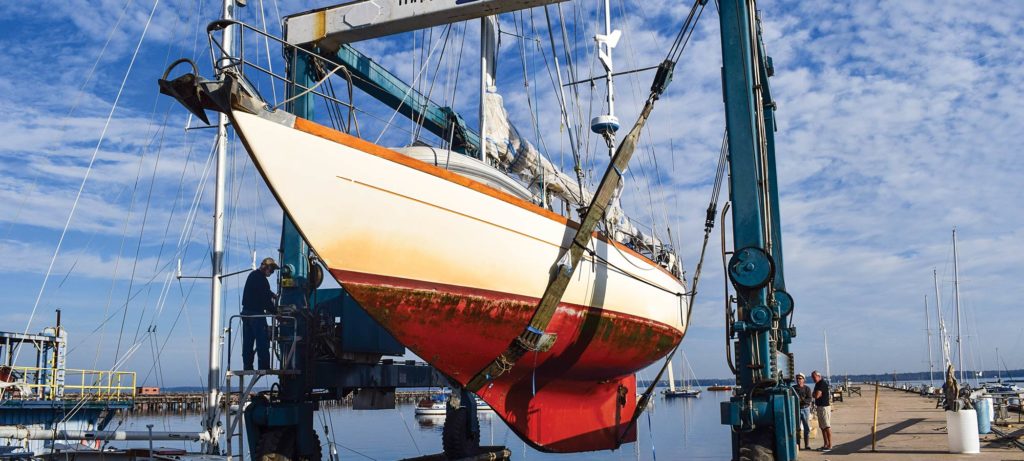
Full disclosure: We don’t haul out Lyra, our 44-foot classic ketch, for bottom painting nearly as often as we probably should. Because we live on it in New England, where the sailing season is short and yards are busy spring and fall, scheduling is an issue. And doing a bottom job is easily our second-most disliked maintenance chore (anything to do with marine sanitation handily takes first place). Despite the fact that it’s an infrequent occurrence, or perhaps because of it, my husband, Green, and I really, really appreciate the end result of a bottom job — a sweet-sailing boat that looks as good as she feels. Our last haulout, in January 2017, was desperately overdue (surprise!); Lyra basically had no bottom paint left; the last application of ablative antifouling had sloughed off during our trek south in the Intracoastal Waterway. By the time we made it to North Florida, we decided to take advantage of the do-it-yourself work yard at Green Cove Springs Marina (not to mention the shoreside accommodations at my parents’ house nearby) and finally give our girl some much-needed attention.
When we last hauled out for a bottom job in our home waters of Newport, Rhode Island, in October 2014, we took all the old paint layers off. After treating a few minor blisters, we used a primer/barrier coat and then topped it off with a copolymer ablative. Unfortunately, a few months later, Narragansett Bay more or less froze over (a rare occurrence), and the ice rubbed our beautiful new paint job bare in places at the waterline. Even with this bad beginning, we were surprisingly able to nurse the bottom paint along (with the occasional scrub from a diver) until our January 2017 haulout in Florida.
Most of the paint was already gone — fortunately, the barrier coat was in good condition — so it didn’t take too much sanding to get the bottom ready for new paint. Although we were mostly happy with the ablative paints that we’d been using since we bought Lyra , we were considering changing to a different type. Each paint option has its pros and cons, so let’s take a look at what’s available and how to decide what’s right for your boat.
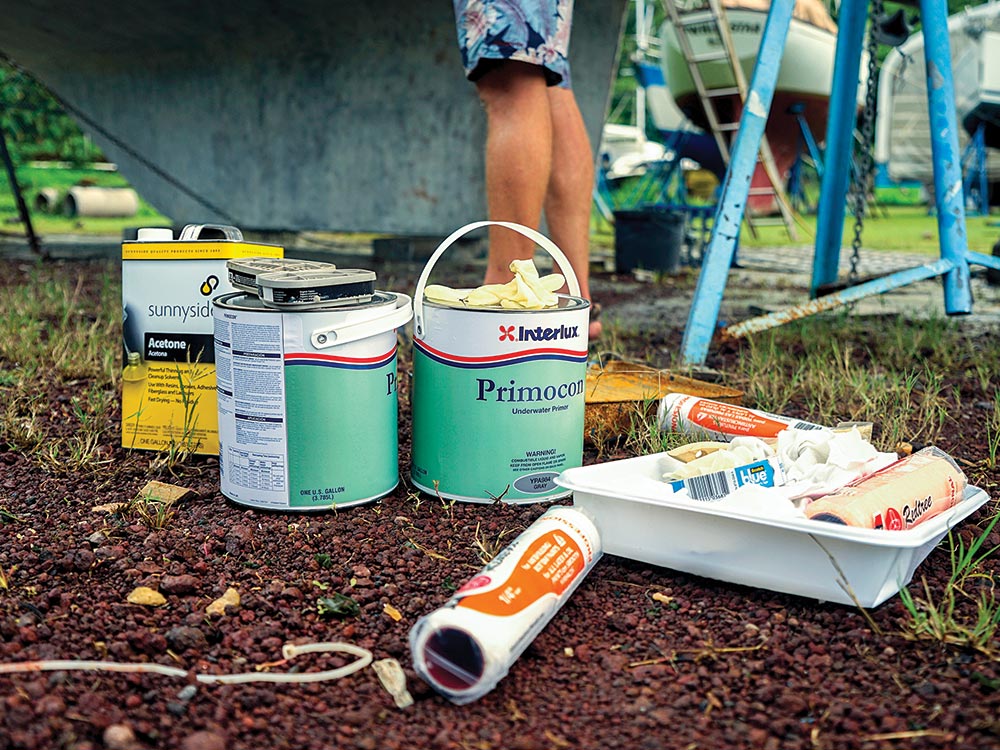
When choosing a bottom paint, the main decisions that you will need to make are whether you want a hard or soft paint, and what type of biocide you need. If your home waters are in a place with strict environmental regulations, such as some places in California, you might be restricted as to what kind of paint you can choose.
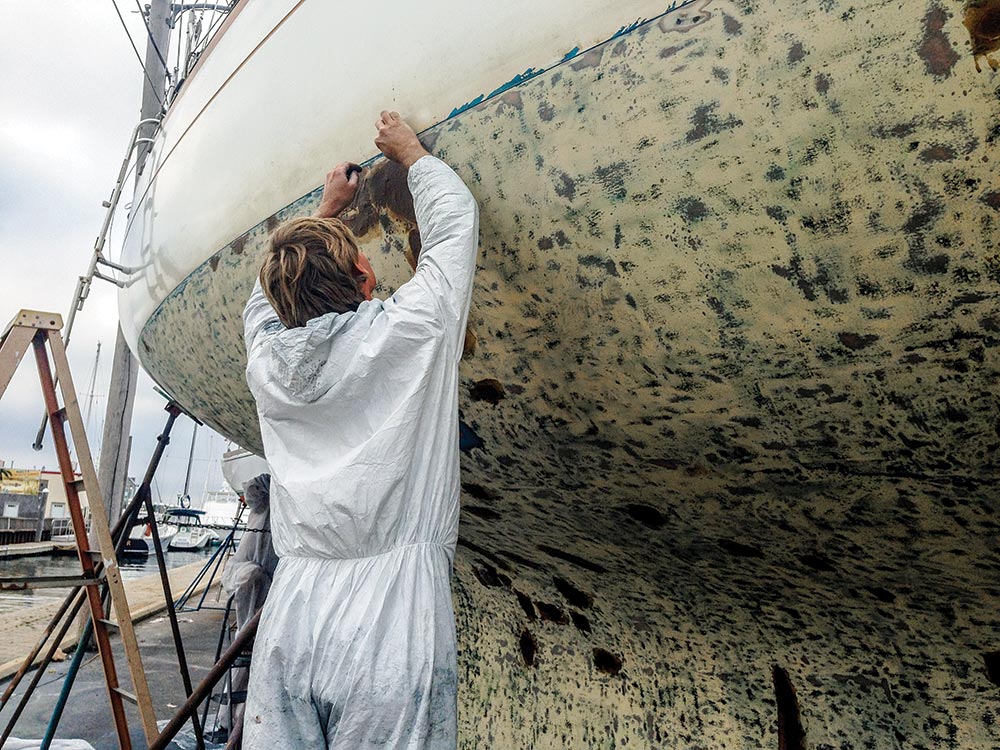
Some of the biggest changes in the world of bottom paints over the past decade or so have involved the biocides used to keep fouling at bay. Long the workhorse of active ingredients, cuprous oxide is still the most commonly used biocide, and it’s found both in hard paints, such as Pettit Trinidad, Interlux Ultra and Sea Hawk Tropikote, and soft, such as Interlux Micron CSC and West Marine PCA Gold. It’s reliably effective. However, concern has grown over the years about copper toxicity in waters with a high number of boats. Another copper biocide is cuprous thiocyanate, which works the same way as cuprous oxide but is a white powder. This allows bottom paints made with cuprous thiocyanate, such as Pettit Vivid, to be made in a much broader range of bright colors, including white.
Paints labeled as copper-free typically use zinc pyrithione (also called ZPT or zinc omadine) as the active ingredient, and metal-free paints usually use a newer biocide called Econea. Irgarol, frequently used as an additive both in metal-containing and metal-free paints, is a biocide that offers highly effective protection against algae, slime and other soft growth. It is usually found in paints labeled as “slime resistant.”
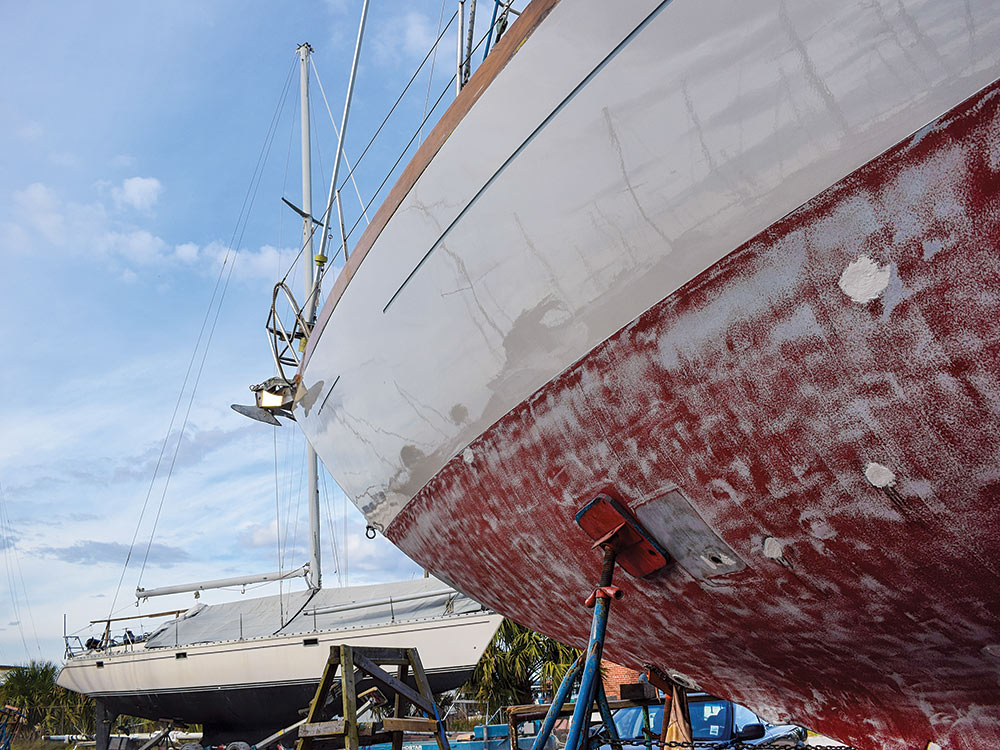
“I think the largest change in the market over recent years is in making antifoulings more environmentally friendly by lowering the amount of volatile organic compounds used, or by making them more efficient either by making the same amount of biocide last longer or using less biocide,” says Jim Seidel, marketing manager for Pettit Paint. “These changes have been driven by several forces, such as regulation, raw-material costs, companies wanting to do the right thing by the environment, new technology becoming available, and most importantly, customers asking for improved products. The acceptance of water-based paint has also come a long way since being introduced.”
Hard or Soft?
Modified epoxy, or hard, bottom paints, such as Pettit’s Trinidad and Interlux’s Ultra, depend more on a high percentage of biocide for effective antifouling than some other paint formulations. The paints adhere well to most surfaces, with most old paints needing just a light to moderate sanding before application of the new hard paint. These paints are recommended for boats that stay in the water year-round, and they work by leaching out biocide at a controlled rate through pores in the paint. For a biocide, most modified epoxy paints use a high percentage of cuprous oxide, usually around 60 percent. Since the paint will oxidize and become ineffective if the boat is taken out of the water, this isn’t a good choice for those who haul out for an offseason (unless a bottom job is part of the plan). Hard paint also does not lose its thickness even when all the biocide has leached out, so eventually you will need to sand or blast the layers off.
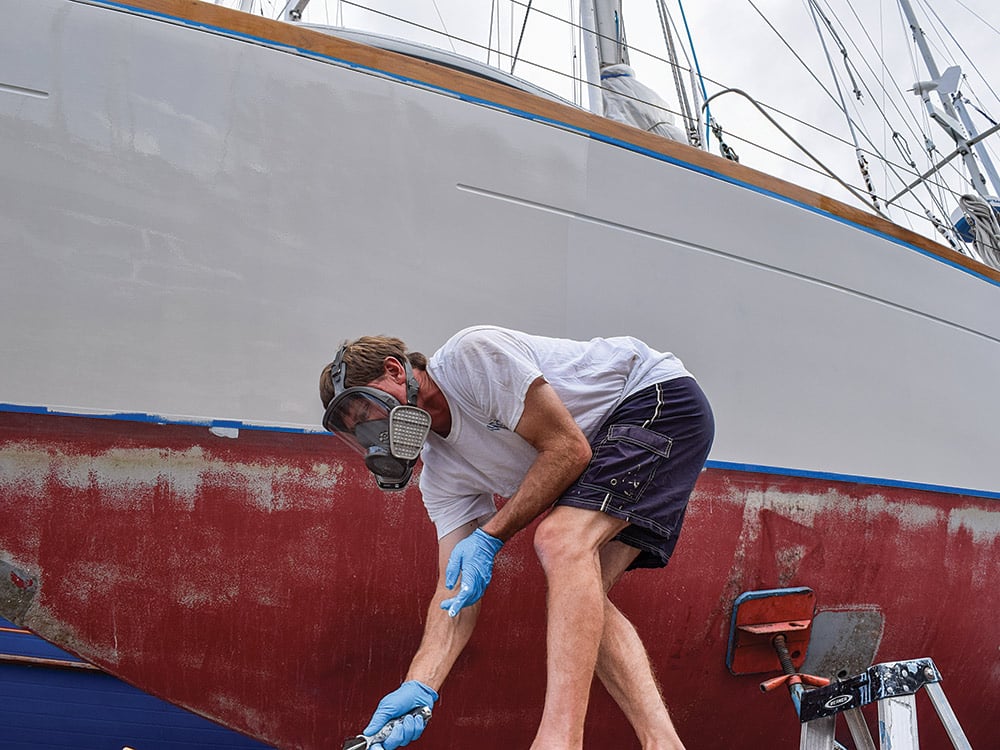
Similar to a bar of soap, a copolymer ablative, or soft paint, slowly wears away over time, releasing fresh biocide as it goes. These paints work well in high-fouling areas, and if you take your boat out of the water for the winter, the antifouling can be reactivated with just a light scrub. While the amount of biocide in soft paints is important for the paint’s effectiveness, the rate at which the paint wears away may be more so, and depends on the blend of resins used in formulating the paint.
In general, the paint you choose for your boat will be based on where you sail and how long the season is. Additional considerations also need to be made for metal hulls.
“Recommendations for a boat used in the Great Lakes with a four- to six-month season would be different from a boat in Florida that might be in the water for 24 months at a time,” Seidel says. “In high-fouling areas in warm salt water, a paint with a high loading of copper would be the general recommendation. If the boat is scrubbed often, a hard antifouling paint will be recommended. Generally, a multiseason copolymer-ablative-type paint can be used in all fouling conditions, but it will wear away faster in warm water.”
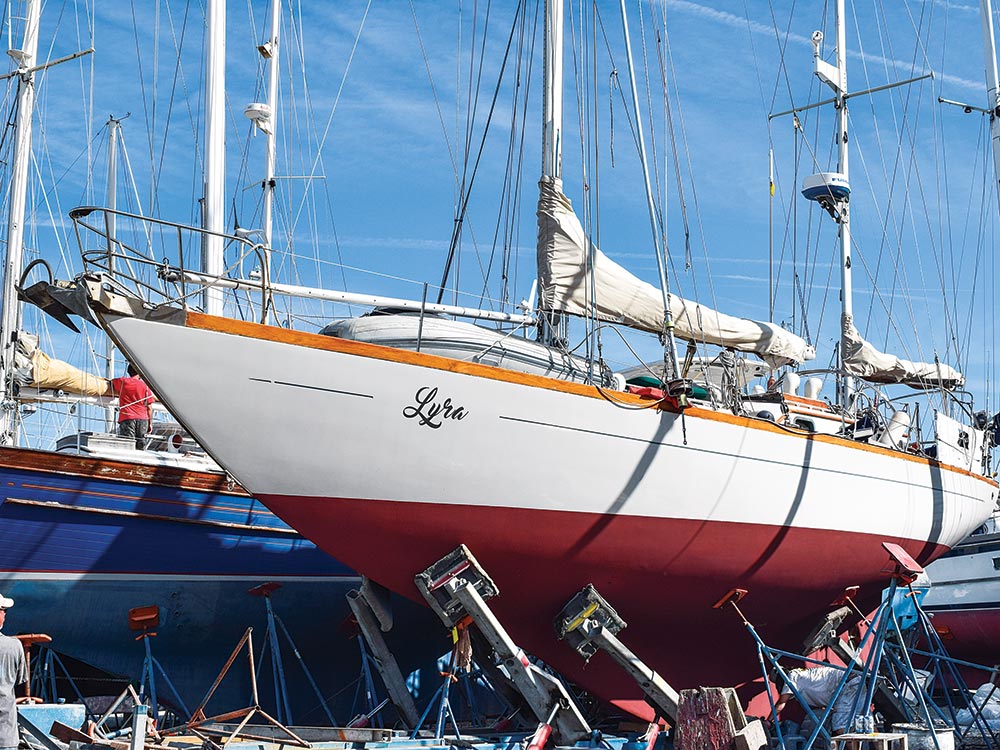
“I generally ask customers what was on the boat and how it worked,” adds Rick White, a technical-support representative from Jamestown Distributors, a marine supply retailer. “If it worked well, I tell them to stick with it or look at a similar product in the TotalBoat [Jamestown Distributors’ house brand] lineup if they want to save some money. If what they had on there didn’t work well, I ask them to check with other boats in their area to see what has worked.”
Looking Ahead
As research has shown the harmful effects of certain biocides that accumulate in the water, awareness of the problem has grown among mariners, and governments have banned some biocides such as tributyltin (TBT) and now copper in some locations. This has pushed companies to look for alternative biocides that have less of an impact on the marine environment but still keep hulls clean. “The next 20 years will bring even more changes,” Seidel says. “And for us in the paint industry, we will have to keep up with the regulations while trying to keep the cost of paint within reach of mariners. It is not going to be easy, but it will be exciting.”
- More: bottom paint , How To , paint
- More How To
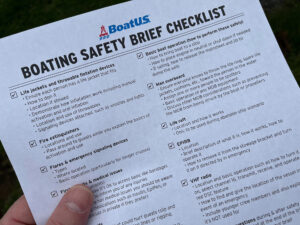
7 Boating Safety Tips for Summer Cruising
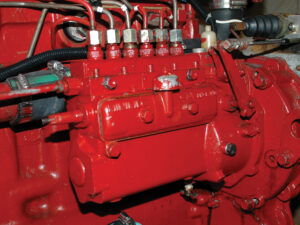
How to Prep for a Diesel You Can Depend On
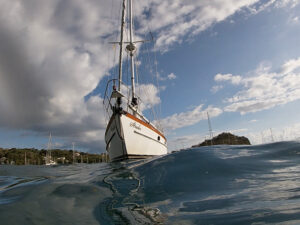

Anchoring in Paradise

Cruising with a Pet
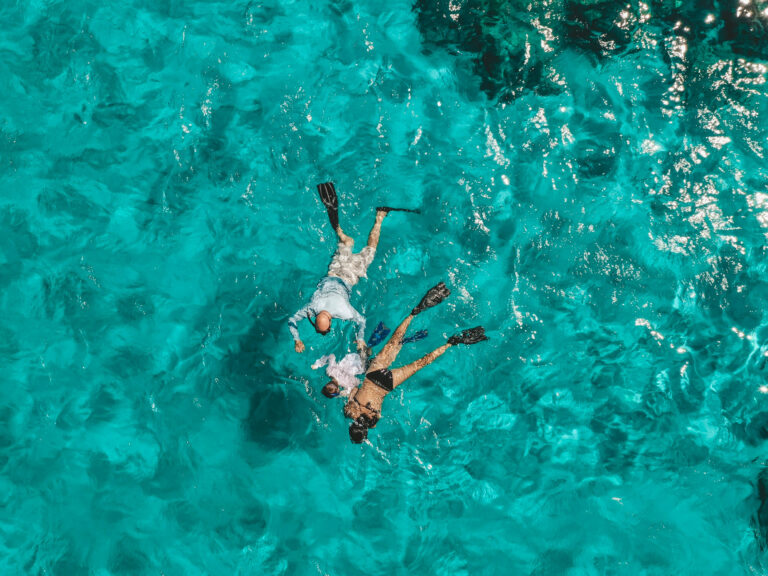
10 Gems of the BVI
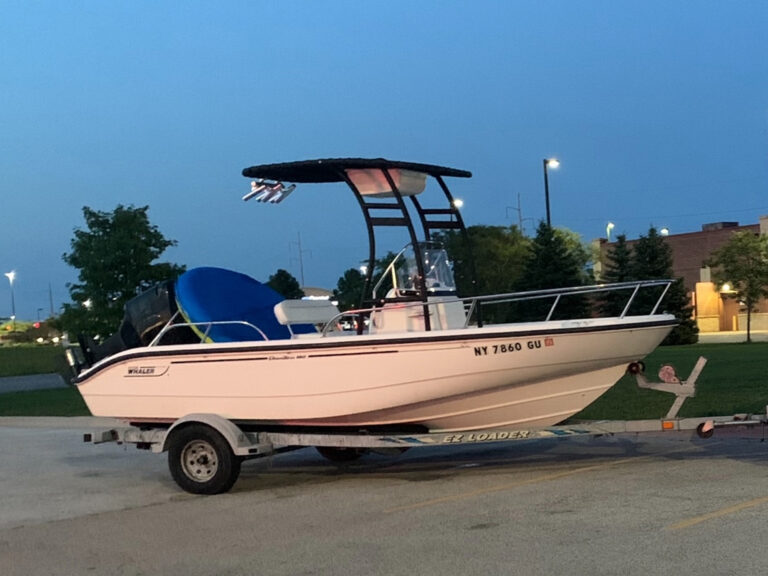
For Sale: A Freshwater Find
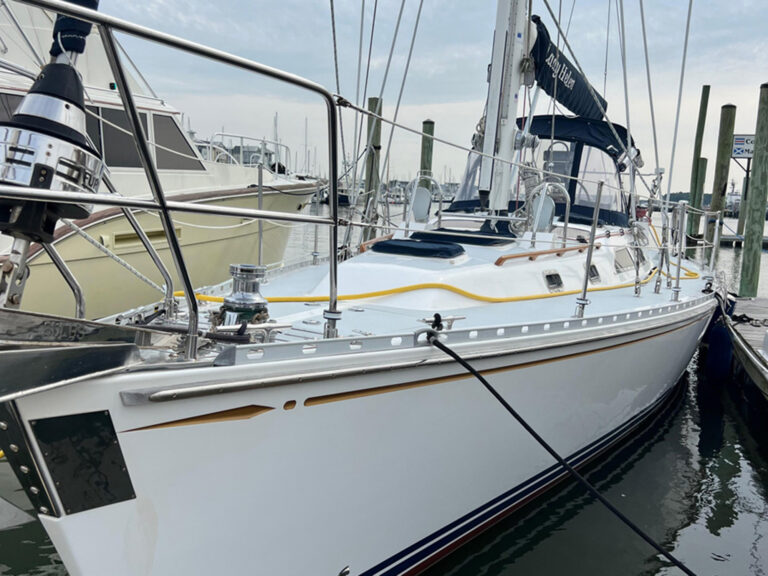
For Sale: 2002 Hylas 46
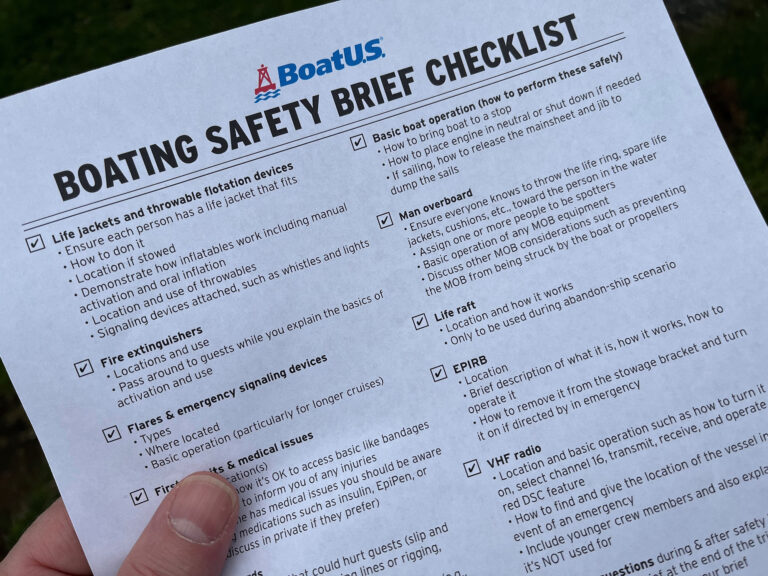
- Digital Edition
- Customer Service
- Privacy Policy
- Email Newsletters
- Cruising World
- Sailing World
- Salt Water Sportsman
- Sport Fishing
- Wakeboarding

Please verify you are a human
Access to this page has been denied because we believe you are using automation tools to browse the website.
This may happen as a result of the following:
- Javascript is disabled or blocked by an extension (ad blockers for example)
- Your browser does not support cookies
Please make sure that Javascript and cookies are enabled on your browser and that you are not blocking them from loading.
Reference ID: be614b5d-1622-11ef-a5b6-58b301e553f6
Powered by PerimeterX , Inc.
- 2024 BOAT BUYERS GUIDE
- MIAMI BOAT SHOW
- Email Newsletters
- Fishing Boat Reviews
- Fly Fishing
- Marine Electronics
- Fishing Tackle
- Fishing Destinations
- The Bahamas Fishing Guide
- Boating Safety

- Uncategorized
Choose the Right Bottom Paint
- By : Glen Law
- Updated: September 21, 2007
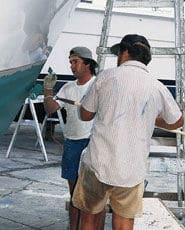
Nobody likes to think about bottom paint, but everybody likes to think about his checkbook – or at least preserving its contents. Second to preserving fishing time, saving money – especially when it comes to boat maintenance – is something we’re all interested in. Even the guys who you’d think have better things to worry about than fuel consumption sit up and take notice when their choice of bottom paint can save them some serious bucks.
Case in point: When the J&T;, a 61-foot Viking, was delivered to Johnson & Towers, Inc. (the big marine diesel distributor in Baltimore), it sported a coat of standard Viking-issue ablative bottom paint. “We’d requested a different paint, but it just didn’t happen,” recalls J&T; skipper Dave Shinn. “They put on the paint they regularly use, the self-cleaning type.”
The J&T; fishes the Atlantic from New Jersey through the Caribbean each season, so water conditions and distances covered are extreme. The boat logs 1,500 hours a year.
“We left the original Micron CSC paint on, and we ran with that until it was time to repaint the bottom,” says Shinn. “Then we switched to the Interlux VC Offshore we had requested, the paint we were most used to.
“Once we switched to the hard paint, we noticed a big difference. Our speed stayed the same, but when we started comparing fuel logs from before the change to after we replaced the soft paint with hard paint, we discovered we had gone from 120 gallons an hour at cruise speed to 110 gallons an hour. And that’s not just on a single trip; it’s consistent with what we’ve recorded in our fuel logs over the past ten months we’ve been running with the VC Offshore.”
Return Investment
Granted, few of us run our boats 1,500 hours a year, or range as far and wide as the J&T; does. But all things are relative, and a nearly ten-percent savings on anything is worth paying some attention to. Look at it as return on investment.
Most of us who paint our own hulls, or who direct the boatyard to use a specific product, decided long ago which brand and type of bottom paint we like best, and we’ve pretty much stuck with it. But things change – water conditions, boat usage, even climate – and all of these variables have a lot to do with the type of paint that’s most efficient. Therefore, it pays to reassess from time to time the way you use your boat. Maybe you keep it in a different place than you did when you chose your paint originally. Maybe you’ve changed the species you most fish for or the amount of running you do. Maybe the quality of water you fish in has changed. The demands you make on your bottom paint can be as varied as the waters you fish and the species you seek.
While there are a number of bottom paints on the market from several major manufacturers, there are really only a limited number of choices you can make. Quite simply, there are “hard” paints and there are “soft” paints, each for a different purpose, and in those two categories there are weak, moderate and strong toxicity levels, which indicates the amount of the toxic ingredient, or biocide, that kills the things that want to live on the bottom of your boat. John Ludgate, vice president of sales and marketing for Pettit Marine Paint, explains some of the differences.
Ablative Vs. Hard
“There are two kinds of paint: ablative, which wears away by itself, and hard, which means the copper biocide leaches out and leaves the paint behind looking like Swiss cheese. At the end of 12 to 18 months you have to sand off this residue and apply a new layer of hard paint.”
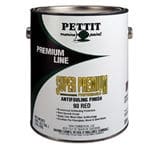
Marine bottom paint comes in different varieties, each designed for a specific application or location.|
Ablative paint requires less maintenance, says Ludgate. “You don’t have to sand it to apply more paint. Like a bar of soap, the whole thing removes itself at a controlled rate, taking the organisms with it.”
Why you would choose one over the other has to do with the way the boat is used, as well as the level of maintenance you are willing or unwilling to take on. Another consideration, says Ludgate, has to do with the characteristics of the paint itself.
“Trailered boats and dry-storage boats require special consideration. Once you take a hard paint out of the water, the copper oxidizes and loses its effectiveness. Then it has to be sanded and repainted before you put it back in the water. With an ablative paint you don’t have to do this.”
There are advantages to both kinds of paint, and perhaps the biggest factor in choosing between ablative and hard is how the boat is used. “For high-speed running you need hard paint,” explains Ludgate. “At speeds of over 25 or 30 knots, ablative paints dissolve much faster. Fishermen who want to run 43 knots out to the canyons prefer a harder, more durable paint that will hold up to the wear of high speeds.”
Another benefit of hard paint is its “scrubbability.” In Southern California and parts of Florida, bottom cleaning is done on a regular basis by divers with scrub brushes, and a hard paint is essential for this kind of treatment. “Other guys will put on an ablative paint, which doesn’t build up on the bottom, so a complete stripping job is seldom necessary,” says Ludgate. “Pettit sells more hard paint than ablative, because that’s what most people have traditionally used, but the trend these days is more towards ablative as people recognize the benefits of less maintenance.”
How Powerful?
Once you’ve established the way you use your boat, and thus the kind of paint you need, you’ll want to consider the strength of the biocides based on the type and ferocity of bottom-fouling organisms that live in your area.
Jim Seidel, the assistant marketing manager for Interlux, explains a systematic approach to reviewing your particular needs. “Geography is a major consideration,” he says. “Different climates support different organisms, which require different paints. Florida is different than Maine. Tropical waters are much tougher on anti-fouling paint than are cold northern waters. In the tropics you need something that is a little more powerful and will hold up a little longer.”
Water type can vary within the same general locale, too. “Here in New Jersey, inshore and offshore are not the same,” says Seidel. “Some bays will be different, too. For example, the eastern side of the bay may be more salty, so on that side you’ll have more animal fouling, while on the west side there’s more slime fouling. It’s a salinity issue. And some areas, such as the mouth of the Connecticut River, have a lot of slime and grass growth – especially in the early spring after everybody puts lawn fertilizer down, so the paint can become overwhelmed. Another spot, Boston Harbor, was long notorious for high fouling because of sewage discharge that put a lot of nutrients in the water.”
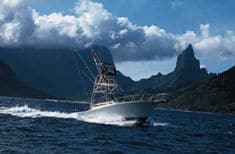
The choice of bottom paint can affect performance and economy, depending on how and where a boat is used. |
These special demands, especially for slime control, have recently been answered by paint manufacturers through the addition of a booster biocide, particularly irgarol, a biocide recently approved by the EPA. Interlux calls it Biolux, and it’s available as a dual biocide in the company’s top-of-the-line paints, both hard and ablative. Pettit includes the same chemical in its premium paints, and designates it with the SR – “slime resistant” – moniker. By any name, it’s an additional biocide that, when combined with the regular copper additive, increases bottom protection in especially demanding conditions – the kind that are likely to change over time in response to climatic change and nutrient runoff.
Booster biocides are state-of-the-art in the world of bottom paint, but another trend under development is the non-metal, non-stick surface – a paint so slick that nothing can grow on it. This approach is not yet commercially viable, as the products that have so far been developed require weekly wipe-downs, a type of maintenance that many find too demanding. But it’s an approach that is likely to be developed over the next few years, so we may want to keep an eye on it.
So, what’s the “bottom line?” Every once in a while it may pay to reconsider the paint you’ve been using. Runoff from that subdivision up the street from your marina might just be making the aquatic environment a lot friendlier for nasty underwater organisms, so you may need a boost in biocide. Or, if you’re running longer distances or putting on more hours each year, a different type of paint may just be more economical. Hey, an annual savings of ten percent in fuel costs wouldn’t be too hard to take!
- More Uncategorized

Everglades Boats

Boston Whaler

Using Weedless Baits to Catch Calico Bass
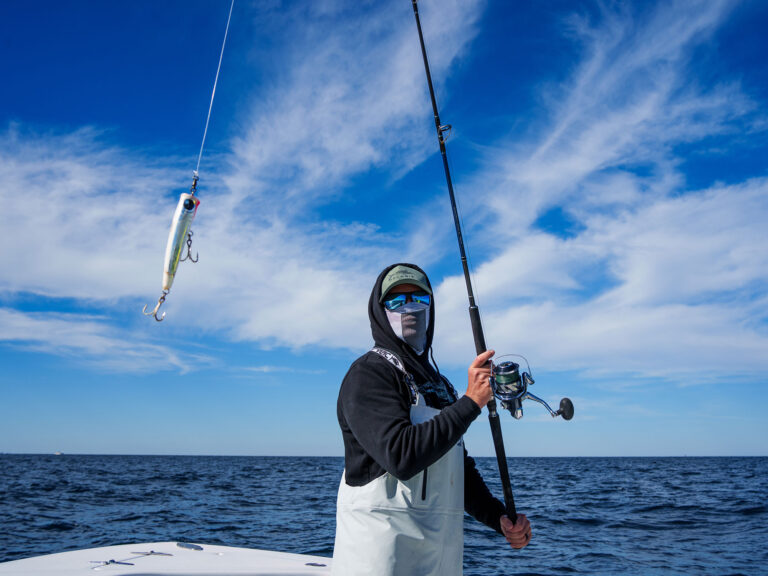
Popping for Tuna
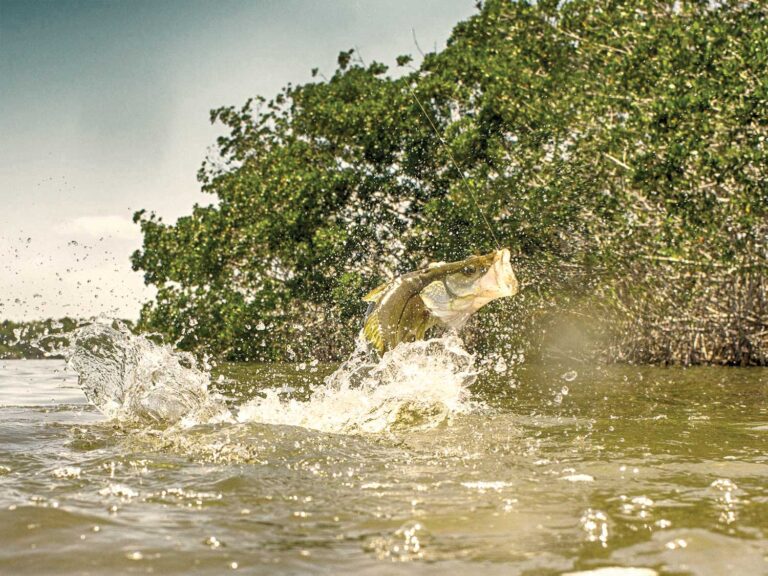
Fun Fishing at the Historic Flamingo Lodge
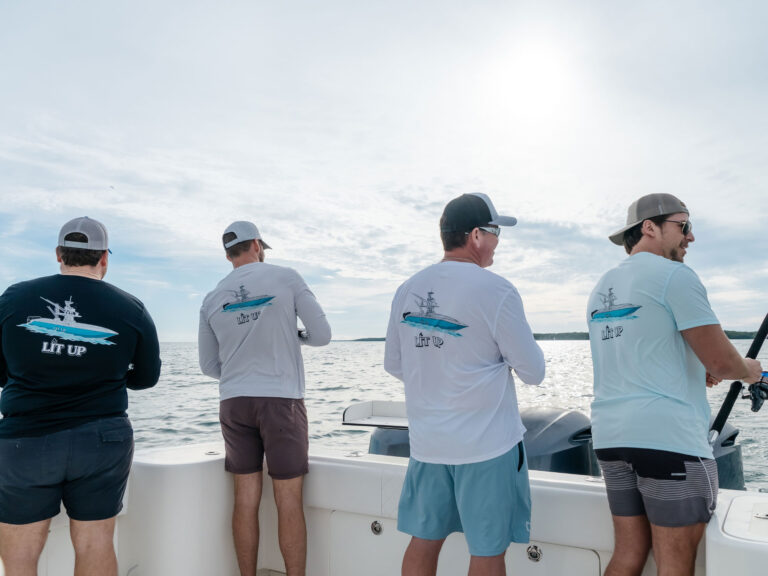
The Mission to Make Custom Boat Gear Convenient, Easy & Fun

- Digital Edition
- Customer Service
- Privacy Policy
- Cruising World
- Sailing World
- Salt Water Sportsman
- Sport Fishing
- Wakeboarding

How to Prep and Bottom Paint Your Boat
A step-by-step process for sanding, prepping and bottom painting your boat [video].
Bottom paint (also known as antifouling paint) helps protect your boat from barnacles, weeds and other aquatic organisms from attaching to the underwater portion of your boat’s hull. If you leave your boat in the water all season, you need bottom paint.
One of the final spring preparation jobs before launching your boat for the boating season is typically painting the bottom.
As I prepared my sailboat Bay Poet for launch this spring, I started with a winter hull inspection in the yard. That is when I determined what projects need to be completed before launch. This year, I took the opportunity to install a new shower sump and then I replaced the sacrificial zincs on the prop shaft (an annual task for me).
Then it was time for final preparations before launch. This includes washing and waxing the hull, followed by preparing the bottom for painting and then, of course, painting.
Here is the step-by-step process that I took this year to prep and paint the bottom of my boat.
Preparing to Paint the Bottom
Determine the Scope of the Work
During that walk-around inspection to which I referred, you may have identified some dings and defects in your fiberglass. If you did find any, you will need to have those repaired or do that yourself.
Those sorts of repairs are beyond the scope of this article. If any deep repairs are necessary…and that would be any damage that might compromise the integrity of the fiberglass, they will need to be addressed and absolutely so if the core is exposed.
It is important to get any such repairs made BEFORE you proceed to sand the bottom in preparation to paint. This way any fiberglass repairs or patches can be faired before your paint. The repair may also need a barrier paint applied before you apply the bottom paint.
Understand that the purpose for sanding is not to remove all of the existing bottom paint, if any. It is to create a surface which will allow better bonding with the new layer of paint. In other words, you want the surface to be painted to have some “tooth”.
Preparing to Sand
A note of caution here: Bottom paints are generally toxic. That is the purpose for them – to inhibit the attachment and growth of organisms, both plant and animal. It will do this by sloughing off microscopic layers while underway. However, the paint itself will often contain a biocide. That biocide is generally non-specific and somewhat toxic for humans as well.
Before attempting to sand your boat’s bottom, check with your marina for their guidelines. You will likely be required to use a ground cover to catch any falling paint particles and dust. You may also have to connect your electrical sander to a dust collection system, generally a shop vac with a HEPA filter installed. Under no conditions should you allow any of the sanding dust to wind up in the water.
Allow for a full day or more. The more helpers you have, the faster it will go. But don’t rush because that will lead to a poor surface preparation or injury. Do not assume that you will be able to sand and paint all in one day.
Before sanding, you may need to use a stiff brush or scrubbing pad to wash away any remaining dirt or organic material. Be very careful with barnacles as they can be very sharp and cause injury. Sometimes you can pop them off with a paint scraper. Other times, you might have to sand them off.
As with woodworking, you want to start the sander before putting it on the hull and then keep it moving so it does not remove too much material in one spot. If you paint your prop shaft and propeller, don’t forget to sand them as well but you are likely to have to do those by hand.
Sanding is generally tedious and some of the positions in which you find yourself will be uncomfortable. I guarantee that you will “feel your work” the next day or two after you are done!
When you are all done with that, dispose of any collected dust and debris in an approved manner. This is a matter of local environmental regulations and just plain common sense. You may also want to throw away your coveralls as they will be very dusty.
Bottom Painting
Tools and Protective Clothing
For the best quality job, you will want to purchase good quality brushes and rollers. At the same time, it will probably not be worth the effort to clean your rollers and brushes at the end of the job. I choose to just throw those away along with the pour spout, rags, and disposable gloves. I do keep the roller handles, extension rods, and plastic painting tarps.
I also wear Tyvek coveralls but not the same ones I might have used during sanding. I will reuse my painting my coveralls until they become too damaged for use. I also wear safety glasses. If you have to get paint off your prescription glasses, it can damage the lenses and coatings. So for the tools that you can reuse, it is worth buying good quality. For items that will be used only once, buy good quality but not top of the line.
Painting Day
I have seen marina staff paint a boat and immediately launch it. I am not sure about that but while you might be able to paint in damp weather, you probably won’t want to do so for your personal comfort, if nothing else.
Next I spread a plastic drop cloth and keep moving it to keep it underneath the area on which I am working.
(NOTE: some marinas will put down a ground cover for you when your boat is hauled out. Of course, there is a cost but that is a decision you may be able to make.)
My preference is to start from the rear since all of the more complicated structures like the rudder and the through-hull box from which the prop shaft exits are in the back.
Work from the wet edges. For all the crevices and corners that your roller can’t quite reach, go back afterward with a smaller roller or a 2 to 3-inch brush. I do not worry about the complete underside of the bulb keel but I will do the underside of wings and under the front of the bulb.
Do NOT attempt to move jack stands on your own when you paint. Coordinate with your marina to have their staff move the stands or alternatively, the marina may paint the areas under the jack stand pads when they launch the boat.
Cleaning Up
I have used my left over paint 2 years later with no problems. It had not even skinned over. This may be a little bit of a challenge next time because the type of paint I have used the last 6 years has been discontinued. I will need to find a compatible replacement both in terms of bonding to the current paint and mixing with the half gallon of my left overs.
All the rollers, brushes, disposable gloves, and even the pour spout should go into a heavy duty plastic bag that gets tied closed securely and then put into the appropriate waste container. Check with your marina for information on proper disposal.
Check out Spring Prep Gear for bottom paint options
Watch this recap video highlighting how I painted the bottom of my sailboat, Bay Poet .
Painting prep and painting can be physically tedious but your bottom needs fresh paint for best performance. If you do the job right, your bottom paint could last more than one season, especially on sailboats. The ablation that occurs is likely to be more pronounced on power boats owing to the higher speeds at which they travel through the water. In any case, inspect, prep, and repaint as necessary.
Likewise, check your sacrificial zincs yearly. You will probably have to replace them at least once a year.
A little bit of maintenance will allow you to enjoy your boat for a long time!
Subscribe to my YouTube Channel for more how-to videos, sailing excursions and more!
Trending Now: Father's Day Gifts for Boat Dads!
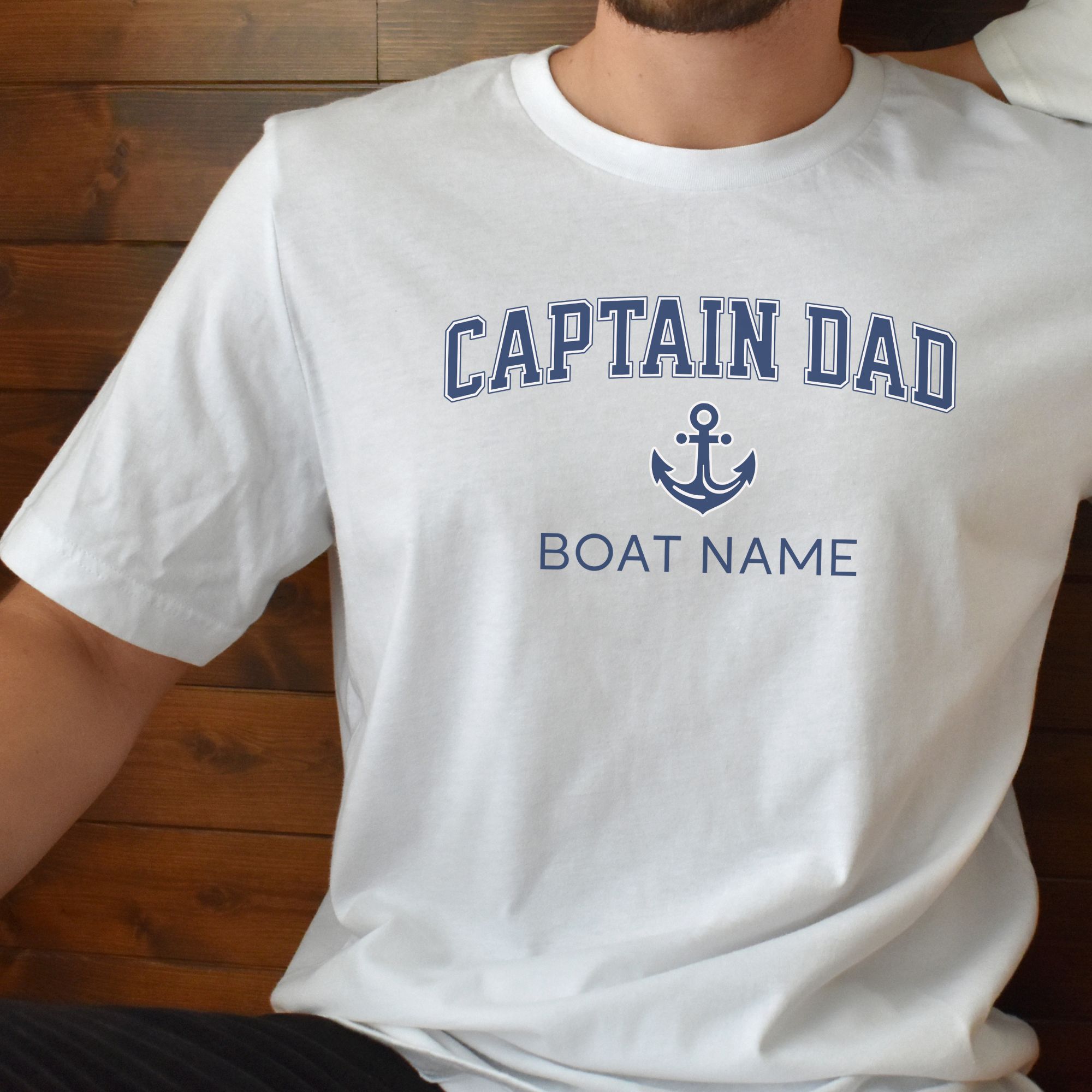
Captain Dad Custom Boat Name Shirt
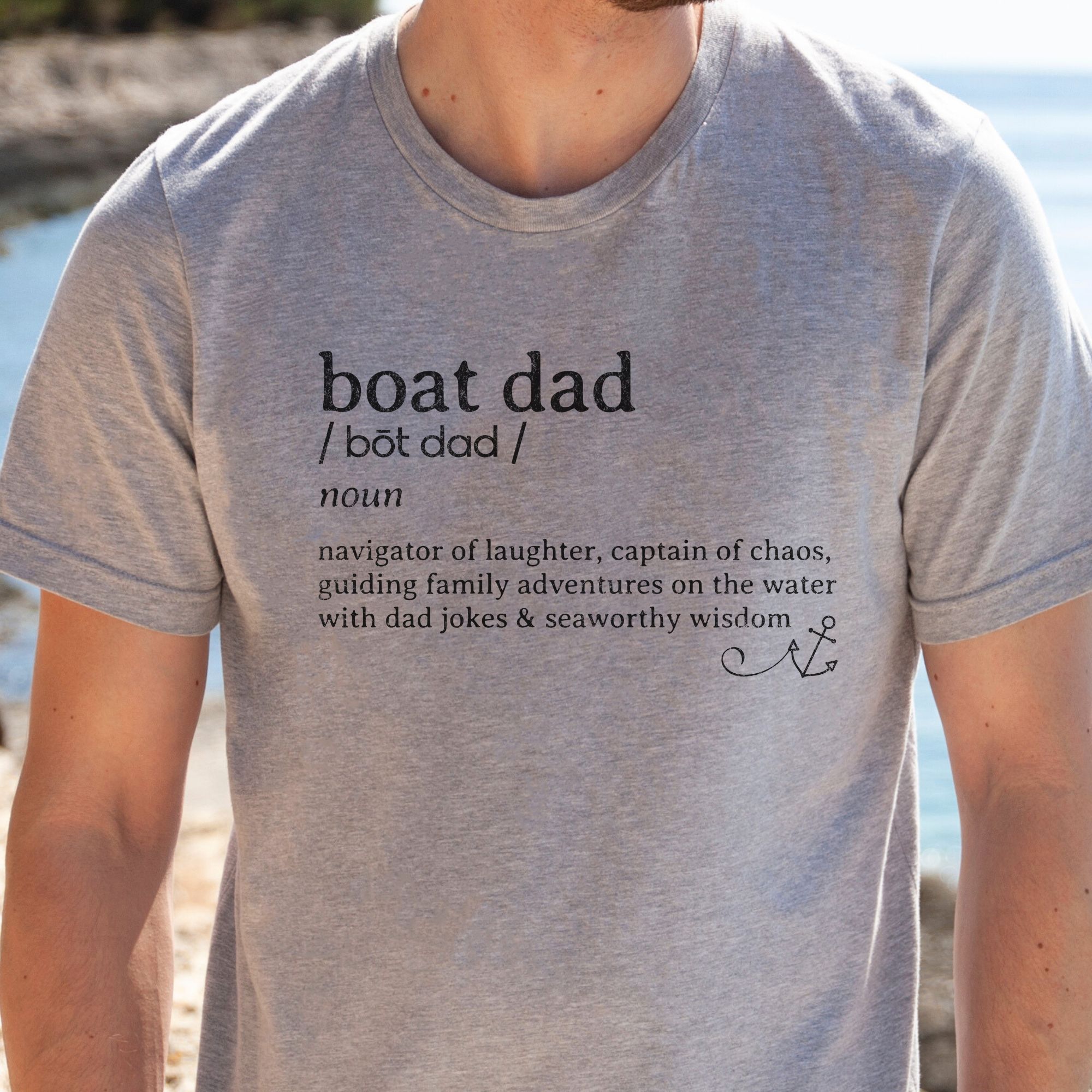
Boat Dad Definition T-Shirt
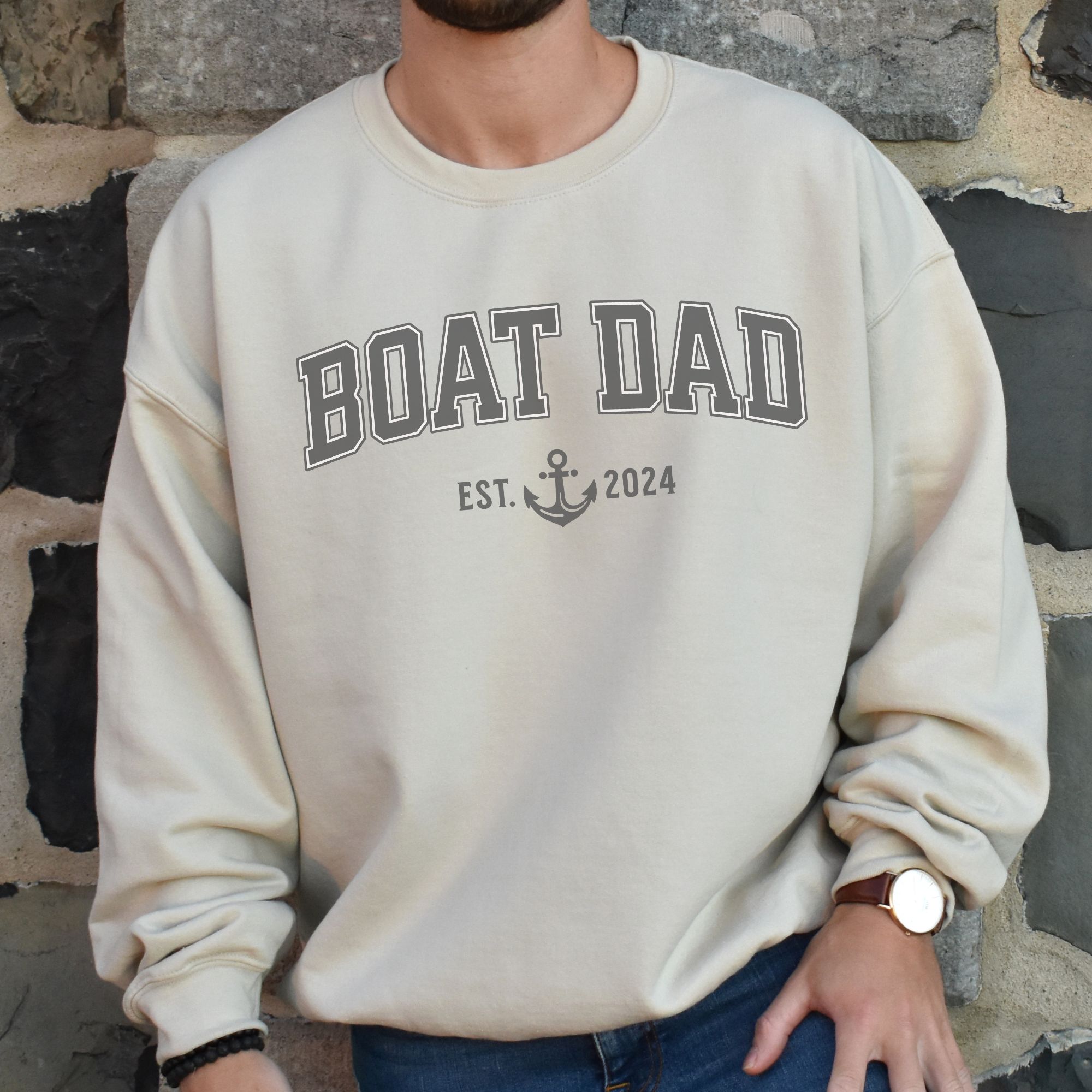
Custom Boat Dad Sweatshirt
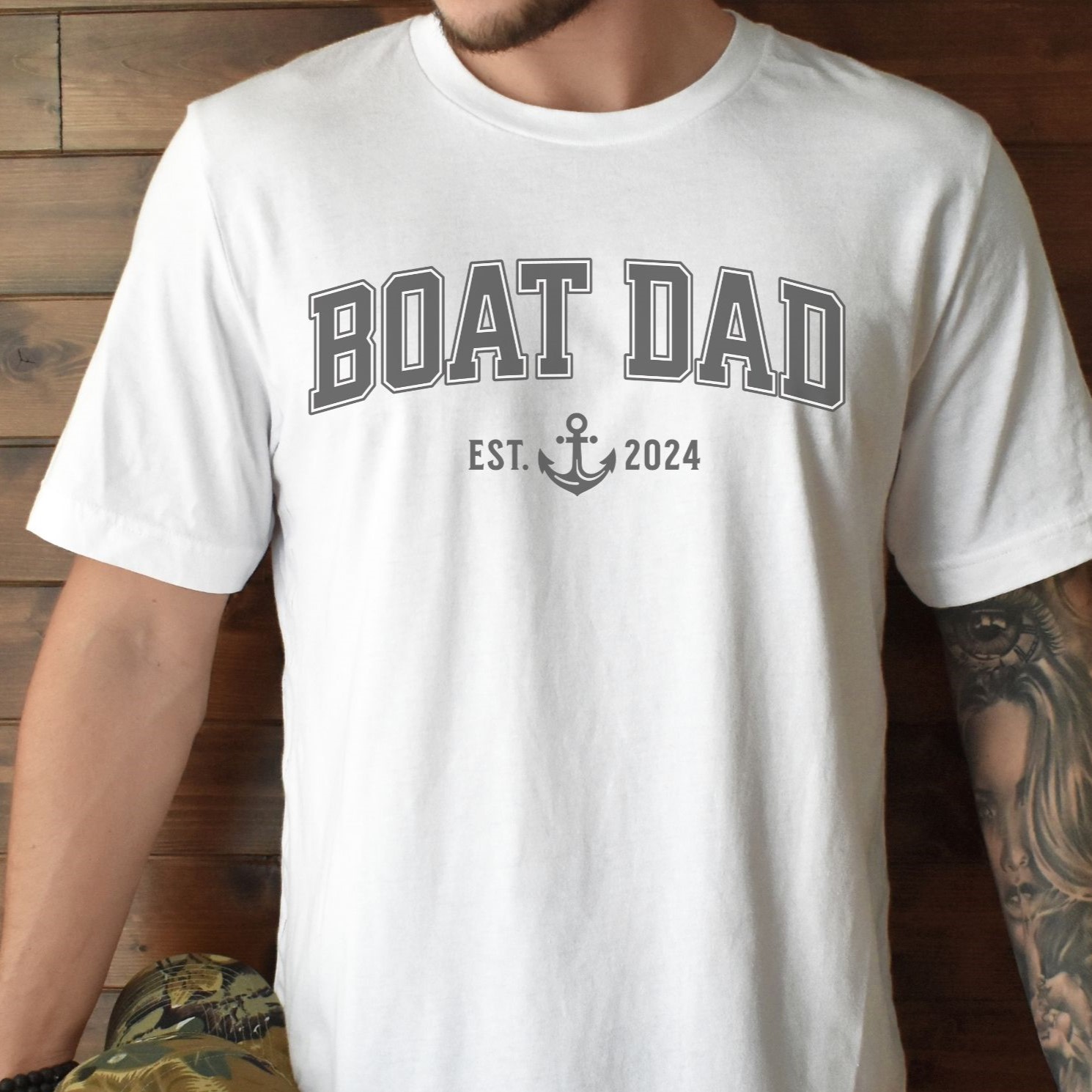
Custom Boat Dad Year Established T-Shirt

Capt. Rob Chichester
Related posts.
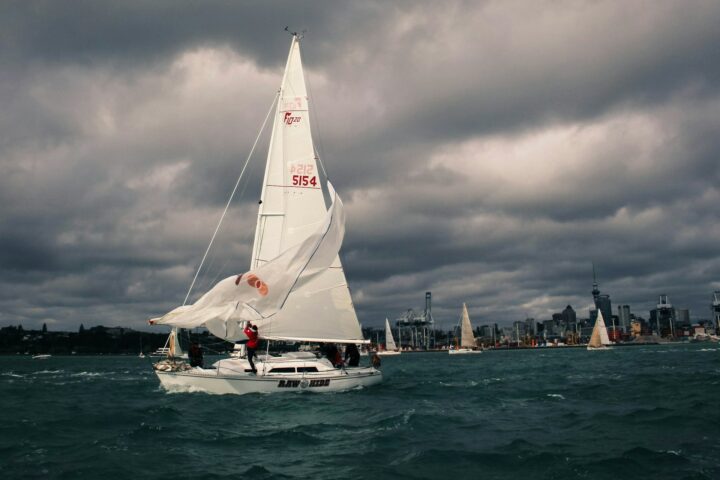
How To Inspect Your Boat After A Storm
May 8, 2024
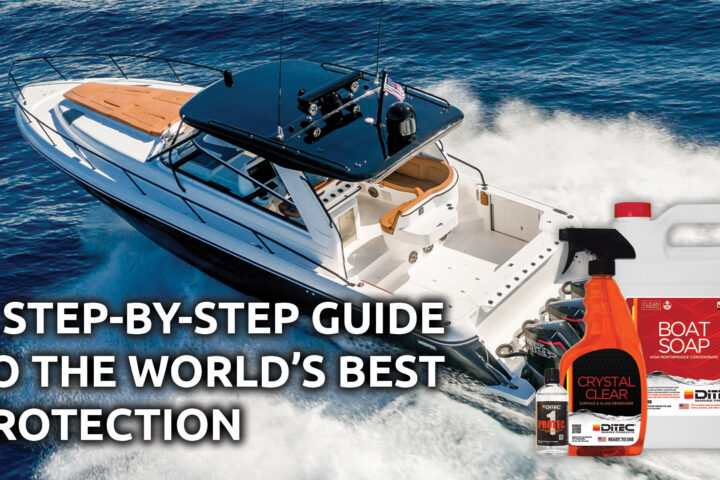
A Step-by-Step Guide to Protecting Your Boat’s Surfaces
February 20, 2024
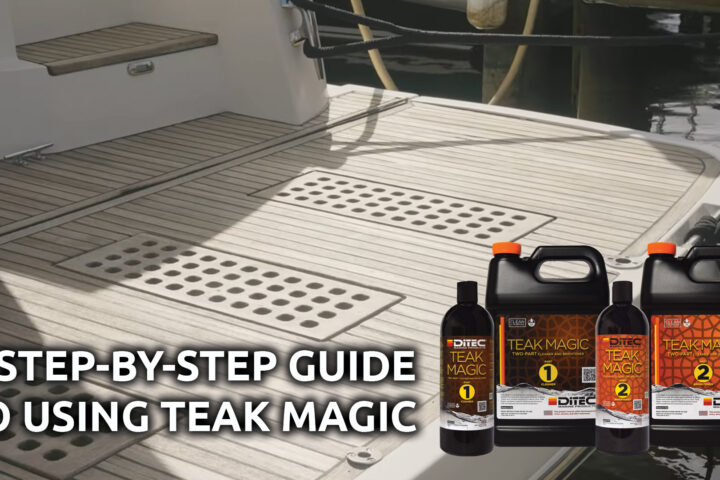
A Step-by-Step Guide to Cleaning Your Boat’s Teak
February 19, 2024
I like your advice to do a walk-around inspection to identify any dins or defects in the boat’s fiberglass to get them repaired. When adding a top or bottom coating to your boat, it would probably help to hire a professional. A professional could ensure that it’s inspected and prepped properly so that it’s ready for the coating, which can then be applied correctly so you have the best results.

I have found the cost of have the marina prep and paint my 41-foot sloop to be somewhat cost prohibitive. The quoted cost is about $6000. I feel very comfortable prepping my bottom myself. I did my research and spoke with the marina service manager before starting. I have had to patch my rudder a couple of times but the bottom paint holds up at least 2 years.
It might not be a bad idea to inspect the boat with a professional in case one misses an important detail. However, from both a cost consideration and to become more familiar with my boat, I always prefer to do as much of the work myself as possible.
Comments are closed.
BIG SALE!! Save on Boat Gear with West Marine's Memorial Day Sale AND SAVE 25% on My Boat Life items hurry sales expire soon!
the-fastest-boat-bottom-paints-antifouling-for-speed
Leave a comment, own your first boat within a year on any budget.
A sailboat doesn't have to be expensive if you know what you're doing. If you want to learn how to make your sailing dream reality within a year, leave your email and I'll send you free updates . I don't like spam - I will only send helpful content.
Ready to Own Your First Boat?
Just tell us the best email address to send your tips to:
Best Bottom Paint For Trailered Boats

July 5, 2023

This article may contain affiliate links where we earn a commission from qualifying purchases.
Key Takeaways
- Different boats have different requirements when it comes to bottom paint.
- For example, if you have a high-speed boat, hard paints may be the best option.
- If you’re boating in saltwater, look for paints specifically designed for saltwater use.
- Look for paints that are easy to apply, with minimal prep work required.
- Lastly, follow the manufacturer's instructions for your bottom paint to be effective.
If you're a boat owner, you know that keeping your vessel in tip-top shape is crucial for its longevity, and that also includes choosing the right bottom paint.
The best bottom paints in the market for trailered boats include Sea Hawk AF33, Pettit’s Odyssey Triton Antifouling Paint, and Rust-Oleum 207012 Boat Bottom Antifouling Paint. These antifouling paints are designed to offer long-lasting protection against water and marine growth.
It’s important to note that there are several factors to consider, such as the type of water you'll be boating in, the frequency of use, and the material of your boat. That means that the best bottom paint for your tailored boat might not be the best choice for another owner. That’s why I've tested different paints and done the research for you. I'll be revealing my top picks for the best bottom paints for various trailered boats.
Table of contents
8 best bottom paint for trailered boats.
As a boat owner, you know how important keeping your vessel in good condition is. One of the most critical aspects of boat maintenance is ensuring that the bottom is protected from marine organisms, including algae and barnacles. This is where quality bottom boat paint comes in.
Using quality boat bottom paint can help prevent marine organisms from attaching to the boat hull. It can also help protect against rust and corrosion caused by saltwater conditions and keep your boat looking great. But with so many options on the market, knowing which one to choose can be challenging.
Here are the top 8 bottom paints for trailered boats:
1. Sea Hawk AF33

When it comes to bottom paints for trailered boats, Sea Hawk AF33 is a popular choice among boaters. This antifouling paint is a self-polishing copolymer ablative finish that is designed to provide long-lasting protection against marine growth and fouling.
Performance
Sea Hawk AF33 is known for its excellent performance in both saltwater and freshwater environments. It’s a hard-modified epoxy that provides a smooth finish and is resistant to abrasion, impact, and chemicals.
The self-polishing feature ensures that your boat maintains a smooth surface, and the paint remains effective throughout the boating season, even when the boat is not in use.
What Sets It Apart
What sets Sea Hawk AF33 apart from other paints is its self-polishing mechanism. This allows it to remain effective throughout the boating season, even when the boat is not in use, so you can use it as a multi-season paint.
- Long-lasting protection against marine growth and fouling
- Smooth finish that is resistant to abrasion, impact, and chemicals
- It has a self-polishing mechanism that ensures the paint remains effective throughout the boating season
- Easy application and quick drying time
- Improved environmental friendliness
- It’s relatively expensive compared to other bottom paints on the market.
Who Should Buy
Boaters who are looking for a high-quality boat bottom paint that provides long-lasting protection against fouling and marine growth should consider Sea Hawk AF33. It’s a great choice for trailered boats and is easy to apply, making it a great option for DIY boats.
Where to Buy
You can purchase Sea Hawk AF33 from a variety of retailers, including Jamestown Distributors .
2. Pettit Odyssey Triton Antifouling Bottom Boat Paint

Pettit’s Odyssey Triton is a top-quality antifouling paint that is perfect for trailered boats. This Pettit marine paint is one of the best boat bottom paints on the market, designed to provide exceptional, multi-season ablative performance, making it a great choice for boaters who want paint that will last for a long time. This boat bottom paint is effective against fouling in the harshest marine environments.
Pettit Odyssey Triton Antifouling Bottom Boat Paint delivers exceptional, multi-season ablative, tri-biocide performance. It combines Copper Thiocyanate with ECONEA® and the versatility of the biocide Zinc Omadine, which is proven for reliability.
This combination makes Pettit Odyssey Triton Antifouling Bottom Boat Paint effective against all types of fouling, including barnacles, algae, and slime.
Pettit Odyssey Triton Antifouling Bottom Boat Paint stands out from other antifouling paints because its trouble-free formula is more dependable and compatible without the challenges associated with old paint.
This paint is also compatible with most paints, making it a great choice for boaters who want to switch to better antifouling paint.
- Exceptional, multi-season ablative performance
- Effective against all types of fouling
- Enhanced HD (Hull Defense) 24-Month Limited Warranty
- Compatible with most bottom paints
- It’s designed with a trouble-free formula that is more dependable and compatible.
- It’s more expensive than other antifouling paints on the market.
Pettit Odyssey Triton Antifouling Bottom Boat Paint is a great choice for boaters who want top-quality antifouling paint that will provide exceptional, multi-season ablative performance.
Pettit Odyssey Triton Antifouling Bottom Boat Paint can be purchased at Jamestown Distributors , a leading supplier of marine products.
3. Rust-Oleum 207012 Boat Bottom Antifouling Paint

If you're looking for a reliable and effective bottom paint for your trailered boat, Rust-Oleum 207012 Boat Bottom Antifouling Paint is definitely worth considering.
This paint offers a smooth but hard and protective finish that slowly releases copper to help prevent the bottom of the boat from fouling below the waterline. It's designed to keep your boat free from the build-ups of barnacles, algae, and other marine organisms or growth.
The Rust-Oleum 207012 Boat Bottom Antifouling Paint has been designed to provide excellent protection against fouling below the waterline.
It's formulated to release copper to prevent the buildup of marine growth slowly. This paint is ideal for powerboats, racing boats, or other regularly hauled and cleaned boats.
What sets the Rust-Oleum 207012 Boat Bottom Antifouling Paint apart is its ability to slowly release copper to prevent fouling below the waterline. It provides excellent protection against marine organisms.
- Provides excellent protection against fouling below the waterline
- Slowly releases copper to prevent the buildup of marine growth
- Ideal for powerboats, racing boats, or other boats that are regularly hauled and cleaned
- Hard, smooth, protective finish
- It's not suitable for boats that are kept in the water for extended periods of time.
The Rust-Oleum 207012 Boat Bottom Antifouling Paint is ideal for powerboats, racing boats, or other boats that are regularly hauled and cleaned.
You can purchase the Rust-Oleum 207012 Boat Bottom Antifouling Paint on eBay or Amazon .
4. Sea Hawk ColorKote Triple Biocide Antifouling Power

If you're looking for a high-quality ablative bottom paint for your trailered boat, Sea Hawk ColorKote Triple Biocide Antifouling Power is a great option.
This self-polishing antifouling is one of the best ablative paints designed to provide multi-season performance and hull protection.
Sea Hawk’s ColorKote Triple Paint uses a triple formula that includes Econea, Copper Thiocyanate, and Zinc Omadine.
This combination provides excellent antifouling power that can help keep your boat's hull clean and free of marine growth.
Its vibrant colors set Sea Hawk’s ColorKote apart from other bottom paints. You can choose from six basic paint colors that can be mixed to create custom shades that coordinate with popular topside yacht finishes.
- Triple biocide formula for excellent antifouling power
- Self-polishing, low-leaching chemistry for improved environmental friendliness
- Vibrant colors that can be customized to match your boat's style
- Multi-season performance for long-lasting hull protection
- It’s designed for use on all hull materials, but it may not be the best choice for aluminum boats.
If you're looking for the best boat bottom paint that offers excellent antifouling power and vibrant colors, Sea Hawk ColorKote Triple Biocide Antifouling Power paint is a great choice.
You can purchase Sea Hawk ColorKote Triple Biocide Antifouling Power on Amazon .
5. Sea Hawk's 4705 QT Smart Solution AF Bottom Paint (black)

If you're looking for a reliable and high-performance bottom paint, Sea Hawk's 4705 QT Smart Solution AF Bottom Paint is definitely worth considering.
This antifouling paint is designed to provide long-lasting protection against barnacles, algae, and other organisms that can damage your boat's hull.
Sea Hawk's 4705 QT Smart Solution AF Bottom Paint is known for its exceptional performance and durability.
It’s formulated with a high copper content, which ensures maximum protection against fouling and corrosion. This bottom paint is also easy to apply and dries quickly, making your painting job easy. In fact, you can easily paint two coats without much struggle.
Its unique formula sets Sea Hawk's 4705 QT Smart Solution AF bottom paint apart from other bottom paints. It contains a special resin that helps reduce paint buildup and makes cleaning easier.
- Provides long-lasting protection against marine growth and corrosion
- Easy to apply and dries quickly
- It contains a special resin that helps reduce paint buildup and makes cleaning easier.
- Compatible with a wide range of substrates
- Eco-friendly and less harmful to the environment
It’s relatively expensive compared to other bottom paints on the market. However, most people find this product's performance and durability well worth the extra cost.
If you own a trailered boat and want to protect its hull from marine growth and corrosion, Sea Hawk's 4705 QT Smart Solution AF Bottom Paint is a great option.
It’s also ideal for DIY boaters who want high-performance bottom paint that is easy to apply and provides long-lasting protection that can last a few seasons.
You can purchase Sea Hawk's 4705 QT Smart Solution AF Bottom Paint from a variety of retailers, including Jamestown Distributors and Amazon . Be sure to follow the manufacturer's instructions carefully when applying this product to ensure the best possible results.
6. TotalBoat JD Select Ablative Antifouling Bottom Paint

If you’re looking for hybrid paints, TotalBoat JD Select Ablative Antifouling Bottom Paint is a great choice. This water-based hybrid ablative paint provides excellent protection against barnacles and slime for a full season.
The paint's ablative properties help shed slime and prevent paint buildup on the surface. You can apply it by brush, roller, or spraying.
TotalBoat JD Select Ablative Antifouling Bottom Paint has a medium copper content that fights hard and soft fouling like barnacles, slime, and weeds.
It’s designed to provide full-season protection against marine growth, saving you time and money on maintenance. The paint's ablative properties also help improve your boat's speed and performance by reducing drag.
TotalBoat JD Select Ablative Antifouling Bottom Paint is a hybrid paint that combines the best of both water-based and solvent-based paints.
It provides excellent protection against marine growth while being easy to apply and clean up. The paint's medium copper content strikes a balance between effectiveness and environmental safety.
- Full-season protection against barnacles and slime
- Ablative properties reduce drag and improve performance
- Low-VOC, low-odor, water-based formula
- Easy to apply by brush, roller, or spray
- Available in different colors to match your boat's aesthetics
- It may not be suitable for boats that are frequently used in saltwater or areas with high fouling pressure.
- The paint's medium copper content may not provide enough protection in extreme conditions.
TotalBoat JD Select Ablative Antifouling Bottom Paint is ideal for boat owners who want a hybrid paint that combines the best of both water-based and solvent-based paints. It’s also suitable for boat owners who want full-season protection against barnacles and slime without compromising performance.
You can buy TotalBoat JD Select Ablative Antifouling Bottom Paint on Amazon and eBay .
7. TotalBoat Underdog Bottom Boat Paint

TotalBoat Underdog is an excellent choice for those who own trailered boats and are looking for high-quality, affordable, and effective bottom paint.
This antifouling paint is designed to provide single-season protection in low-fouling conditions. It’s a solvent-based ablative paint that continuously releases fresh 24% cuprous oxide biocide while minimizing paint build-up.
TotalBoat Underdog is a reliable and effective bottom paint that provides excellent protection against barnacles and other marine growth.
It’s designed to wear away gradually as your boat moves through the water, which helps to reduce paint build-up and ensure that your boat remains clean and free of fouling.
What sets TotalBoat Underdog apart from other bottom paints is its affordability. It’s an excellent value for money and provides excellent protection against marine growth. Additionally, it’s easy to apply and dries quickly, which makes the painting process faster and more convenient.
- Provides single-season protection in low-fouling conditions
- Continuously releases fresh biocide to prevent marine growth
- Minimizes paint build-up to ensure a clean, smooth bottom
- Affordable and excellent value for money
- While TotalBoat Underdog is an excellent choice for many boat owners, it may not be suitable for those who sail in areas with high fouling conditions.
- Also, it’s a single-season paint, which means it must be reapplied each year.
TotalBoat Underdog is an excellent choice for boat owners who are looking for an affordable and effective bottom paint that provides single-season protection in low fouling conditions. It’s also a great option for those who are looking for boat paint that is easy to apply and dries quickly.
TotalBoat Underdog is available for purchase from a variety of retailers, both in-store and online retailers such as Jamestown Distributors and Amazon .
8. Sea Hawk's Aluma Hawk Aluminum Bottom Boat Paint

If you're looking for a quick-drying, corrosion-inhibiting paint coating for your aluminum boat, Sea Hawk's Aluma Hawk Aluminum Bottom Boat Paint is an excellent choice.
This chromate-free paint is designed to be used both below and above the waterline and can be applied directly to the metal without a primer.
Aluma Hawk boat paint has a unique phenolic resin, which allows you to use it as a primer directly on your aluminum boat or other metal boats, whether you have a topcoat or don’t.
It provides superior protection against potential damage and degradation, making it an ideal choice even for aluminum hulls.
What sets Aluma Hawk apart from other bottom boat paints is its ability to be used as a primer directly on your aluminum boat. This not only saves time but also provides an additional layer of protection against corrosion.
- Quick-drying
- High-solids
- Corrosion-inhibiting
- It can be used above or below the waterline
- It can be used as a primer directly on metal
- Provides superior protection against potential damage and degradation
- Aluma Hawk may be unsuitable for boats made from materials other than aluminum.
- It’s not the most cost-effective option for those on a tight budget.
If you own an aluminum boat and are looking for a high-quality bottom paint that provides superior protection against corrosion and potential damage, Aluma Hawk is an excellent choice.
You can purchase Sea Hawk's Aluma Hawk Aluminum Bottom Boat Paint from a variety of retailers, including Jamestown Distributors and Amazon .
Factors to Consider When Choosing a Bottom Paint for Your Boat
Choosing the right paint for your trailered boat is crucial to keeping it in good condition and preventing damage from fouling organisms. Here are some factors to consider when choosing boat bottom paint:
Water Conditions
The water conditions where you will be boating will determine the type of bottom paint you need. For example, if you intend to boat in saltwater, you’ll need a different type of bottom paint than the one you’ll be using to boat in freshwater. Salt water tends to be more corrosive and requires a bottom paint that can withstand harsh conditions.
Type of Boat
Your boat type will also determine the type of paint you need. Different types of boats have different needs when it comes to bottom paint.
For example, a sailboat that spends most of its time at anchor will need a different type of bottom paint than a powerboat that is used for watersports.
Frequency of Use
How often you use your boat will also determine the type of bottom paint you need. If you use your boat frequently, you will need bottom paint that can withstand the wear and tear of constant use.
But if you only use your boat occasionally, you may be able to get away with less durable bottom paint.
Environmental Concerns
If you’re concerned about the environment, you may want to choose an eco-friendly bottom paint. Some boat bottom paints contain harmful chemicals that can leach into the water and harm marine life. Look for a bottom paint that is labeled as eco-friendly or low VOC.
The cost of bottom paint can vary widely depending on the type and brand you choose. While choosing the cheapest or most economical option may be tempting, keep in mind that a lower-priced bottom paint may only last for a short time or provide as much protection as a higher-priced option.
So as you conduct a paint comparison on the market, consider your budget and choose the best bottom paint you can afford.
Compatibility with Existing Paint
If you’re repainting your boat's bottom, ensure the new bottom paint is compatible with the existing paint. Using incompatible paints can cause the new paint to peel or flake off, damaging the boat's hull.
By taking these factors into account, you’ll choose the best bottom paint to keep your boat in good condition and prevent damage from fouling organisms.

Best Boat Accessories For Dads

Best Fuel Water Separator For Boat

Best Boat Watches

Best Boat Transom Tie Down Straps
About THE AUTHOR
Brian Samson
I have a deep love of houseboating and the life-changing experiences houseboating has brought into my life. I’ve been going to Lake Powell on our family’s houseboat for over 30 years and have made many great memories, first as a child and now as a parent. My family has a passion for helping others have similar fun, safe experiences on their houseboat.
Trending Now

The Best Boat Safety Gear for Every Zodiac Sign

People Who Are Good At Capturing Stunning Lake Photos Always Use These Accessories

Best Jon Boat Seats

Best Boat Knives
After spending over 30 years on houseboats, the memories and knowledge we've gained will never fade. Learn from our experiences here on LakeWizard. You can read more about us and our team, here .
©2024 LakeWizard. All rights reserved.
You can email us at [email protected]
LakeWizard.com is a participant in the Amazon Services LLC Associates Program, an affiliate advertising program designed to provide a means for sites to earn advertising fees by advertising and linking to Amazon. This site also participates in other affiliate programs including but not limited to ShareASale, CJ, and ClickBank, and is compensated for referring traffic and business to these companies.
How to Articles | Bottom Paint Store
Learn more about boat paint applications and marine supplies.

Which Bottom Paint is Best for Freshwater Lakes?
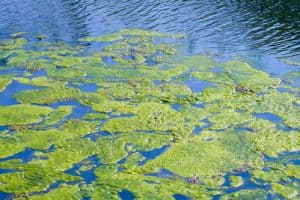
The short answer is this: Antifouling Bottom Paint that works well in the harsh conditions of the Caribbean will be more than enough protection for boats in freshwater lakes. The real trick is choosing the paint that will fit your situation the best. Choosing a bottom paint with more biocide (usually cuprous oxide) will be more potent and fight off growth more successfully. Sometimes you don’t need to purchase the strongest and the greatest. A paint with just the right amount of biocide will do nicely and can also save a few bucks.
Here are some basic guidelines to help you decide which paint is best for your boat.
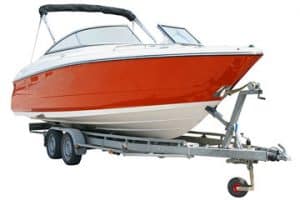
If the boat never comes out of the water except to be repainted , a Hard Epoxy Bottom Paint will keep away the algae. Sea Hawk Sharkskin is a mid strength Hard Bottom Paint that fits a tighter budget.
What about Bottom Paint Additives?
Sea Hawk bottom paint produces a paint additive called Bio Cop TF to help fight against algae and soft growth. This product will boost the effectiveness of your paint’s ability to keep the hull free of growth. **NOTE: Biocop TF Pint may only be used as a bottom paint additive in the following products: AF-33, Cukote, Sharkskin, Talon, and Tropikote. A booster has restrictions to paint added to and you should stick with the same manufacturer.
If you still aren’t sure what is needed for your boat, check out these other How To Articles:
Do I Need Bottom Paint on My Boat?
What is the Best Paint for My Boat?
Choosing the Right Boat Paint
How to Apply Bottom Paint Over Existing Bottom Paint
- New Sailboats
- Sailboats 21-30ft
- Sailboats 31-35ft
- Sailboats 36-40ft
- Sailboats Over 40ft
- Sailboats Under 21feet
- used_sailboats
- Apps and Computer Programs
- Communications
- Fishfinders
- Handheld Electronics
- Plotters MFDS Rradar
- Wind, Speed & Depth Instruments
- Anchoring Mooring
- Running Rigging
- Sails Canvas
- Standing Rigging
- Diesel Engines
- Off Grid Energy
- Cleaning Waxing
- DIY Projects
- Repair, Tools & Materials
- Spare Parts
- Tools & Gadgets
- Cabin Comfort
- Ventilation
- Footwear Apparel
- Foul Weather Gear
- Mailport & PS Advisor
- Inside Practical Sailor Blog
- Activate My Web Access
- Reset Password
- Customer Service

- Free Newsletter

Pearson Rhodes 41/Rhodes Bounty II Used Sailboat Review

Hallberg Rassy 42 Used Sailboat Review

How to Perform Your Own Pre-Buy Inspection

Beneteau 323 Used Boat Review

How Does the Gulf Stream Influence our Weather?

Can You Run a Marine Air-Conditioner on Battery Power?

Preparing Yourself for Solo Sailing

Your New Feature-Packed VHF Radio

Practical Sailor Classic: The Load on Your Rode

Anchor Rodes for Smaller Sailboats

Ground Tackle Inspection Tips

Shoe Goo II Excels for Quick Sail Repairs

What Oil Analysis Reveals About Your Engine

An Unusual Sailboat Shines a Light On A Sustainable Future

Is It Time to Get an Electric Dinghy Motor?

Bottom Paint 30-Month Update

Battle of the Teak Cleaners — Snappy Teak-Nu vs. Star Brite

New Seacocks for the Offshore Sailor

Bottom Paint Care

Are E-bikes Worth the Extra Weight and Cost?

How to Handle the Head

How to Select Crew for a Passage or Delivery

Preparing A Boat to Sail Solo

Re-sealing the Seams on Waterproof Fabrics

Waxing and Polishing Your Boat

Reducing Engine Room Noise

Tricks and Tips to Forming Do-it-yourself Rigging Terminals

Marine Toilet Maintenance Tips

Learning to Live with Plastic Boat Bits
- Boat Maintenance
Peel Away Still Most Effective Bottom Paint Stripper
Strippers using plastic covering sheets, like peel away and west marines marinestrip, stay active longer than other strippers..
Along with changing the engine oil, stripping multiple layers of old bottom paint has to be one of the most onerous jobs a boat owner faces. If youve got a lot of bottom paint, to the point that it has begun flaking off, it is time to take the bottom down to gelcoat.
Since methylene chloride, the active ingredient in many strippers, was determined to be carcinogenic, chemical companies have been working to develop safer alternatives. Weve been testing these so-called safe strippers for several years.
The active ingredients used in these new products include acetone, methyl ethyl ketone (MEK), toluene, dimer acid, hydroxyethanoic acid, dibasic ester and methyl-2-pyrrolidone. Most of the labels call these products environmentally friendly and biodegradable, but also warn that they cannot be made non-poisonous, adding that they may be fatal if ingested. Clearly, these are still powerful chemicals. After all, they have to emulsify paint or penetrate and release it from the substrate-no mean feat.
Why Use a Stripper? Good question! This most recent test reminded us what a messy job it is, especially working on an overhanging surface (i.e., the bottom of a hull). While some of the products can be sprayed (one, Napier SV-35/M insists on professional spraying), most owners will use a brush for application. Thats what we did. The five strippers tested all have the consistency of a thick gel or paste, and instructions call for laying it on as thick as possible. The stuff invariably slops off onto the ground, your arm, your face… It aint clean and it sure aint fun.
And because this stuff isn’t cheap-up to $200 per 5-gallon pail-you hate to see an appreciable portion of your investment falling off, wasted. (Oh, be sure to spread a drop cloth or cheap plastic cover on the ground to catch the slop and the bottom paint scrapings which will follow.) After applying the stripper and waiting the recommended time, you then have to scrape off what paint will come. Most likely, youll have to apply a second coat of stripper and scrape again. Then, with any luck, you will sand the bottom (we like a random orbit sander) and be done with it. This might be a good time to consider applying a barrier coat.
But what are the alternatives? Shotblasting is an option but not inexpensive. And there is the risk of damage to the gelcoat. Operator proficiency is key.
Several years ago, we reported on the Armex Accustrip System, which is essentially shot blasting with baking soda as a media. Its about as fine as talcum powder. The idea is that it is less abrasive and less likely to damage the gelcoat. Developed by Church & Dwight Co., makers of Arm & Hammer baking soda, Armex is used for removing grease, rust, paint and other coatings from industrial equipment. Accustrip is the name of the blasting apparatus.
As we discovered in our test, it works well, but anything that can take paint off, can damage gelcoat, too. It depends on the amount of pressure used, and the operators skill. Following our report, one PS reader reported watching a boat being blasted with Armex; all went well until the operator failed to recognize the gelcoat, and cut through it to the underlying laminate. The owner stopped him when he realized his gelcoat was being taken off.
Cost is 57-1/2 per pound. Expect operators to use about a half pound per minute at 20 lbs. pressure. Because the baking soda media is so fine, it wont work in ordinary blast equipment typically owned by boat yards. The blasting is most often done by contractors with mobile trucks. Last time we checked, technicians worked for $125 per hour. We were told it would take four hours to do a 33-foot boat-total cost: $500-$600.
The bottom line with shotblasting is to watch the job carefully and not hesitate to stop the process if you believe your gelcoat is being damaged.
Another reader said a good shotblasting job leaves just a little tooth for good paint adhesion. Any more tooth than that and you may find yourself having to fill and fair the bottom by troweling on epoxy and some sort of filler. That means a lot of work, both in application and in sanding.
It is possible to scrape the paint off with a good quality scraper. Occasional contributor Bill Seifert says he can clean the bottom of a 50-footer in one day with a 1 Red Devil scraper. We don’t doubt him, and maybe this is ultimately easier, but we don’t aim to find out. Scraping may be worth at least an experiment. If the paint sheds easily with one pass, perhaps youll go for it. But if it resists, as do the two oldest layers of bottom paint on Viva, our 1975 Tartan 44 test boat, wed resort to sanding at that point. In any case, round the corners of the scraper so as not to gouge the hull, and keep a file handy for frequent sharpening.
Which brings us back to the strippers. Cost to do a 40-foot boat yourself may well be upwards of $500, especially if you require two coats. Still, this is a significant savings over a professional shotblasting. But youll pay the difference in sweat and hard labor.
There is no easy way to remove multiple paint layers; either you do the work, or pay someone else to do it for you.
The Tests In addition to perennial winner Peel Away, the four other products tested this year were Dolphinite Marine Paint and Varnish Remover, Interlux Interstrip 299E, Napier SV-35/M and West Marine MarineStrip Bottom Paint Stripper System.
Peel Away and West Marine MarineStrip are brown-colored pastes. The others are opaque or colored gels. All were applied with a disposable brush, though as mentioned, some can be sprayed.
Sections of Vivas hull were taped off into about 2′ x 5′ rectangles. These in turn were taped into smaller sections. Each stripper was applied to the squares within its rectangle. After 30 minutes, we scraped the first section in each rectangle and noted the results. Subsequent sections were scraped at 1 hour, 2 hours and at the maximum time duration specified for each product, which varied from 3 to 36 hours.
The Results None of the products did much in the first 30 minutes. After one hour some paint was removable and after two hours a bit more. The results are noted in the accompanying chart.
Some of the strippers began to harden after about four hours, making removal of the dried-out gel difficult. Some of the strippers call for specific cleaners to remove, such as Interstrip 399 for Interstrip 299E, Peel Away All Purpose Cleaner and Surface Prep or mineral spirits for Peel Away. They will, however, sand, but not always easily. Better to scrape away the stuff before it hardens and save the step and cost of an extra product.
All of the strippers removed the three to four layers of black bottom paint on top, but not uniformly. None of the strippers penetrated the well-adhered blue and green bottom layers. A second application was required to get to gelcoat.
We found that Peel Away and West Marine MarineStrip were the most effective, with Peel Away having the decided edge. Part of the reason we believe is that Peel Away is by far the thickest paste and least likely to drip off. Both of these products require that you plaster a cellophane sheet (provided) over the product to keep the solvents from flashing off. This keeps the paste from drying out and allows it to remain active longer. The other three do not provide a plastic film, nor would you want to with Dolphinite or Interstrip 299E as they should only be left on the hull a few hours and will still be moist at the end of that time.
After 24 hours, the Peel Away was still wet and active while the West Marine stripper had unexpectedly hardened under the plastic sheet.
Because Peel Away removed the most paint and was the easiest to apply, it remains our winner. West Marine MarineStrip is second, but test it periodically to make sure it isn’t hardening. Dolphinite, Interstrip 299E and Napier SV-35/M performed more or less the same, with the advantage going to the first two. Napier believes that if we had sprayed its product, as recommended, it would have performed better.
Performance varies with ambient temperature and most stripper labels stipulate a minimum such as 50F. In our experience, and from what weve learned from other users, its much better to apply in temperatures of at least 65F and higher. Our test was conducted in 75F weather.
Gelcoat Damage? Just as we were beginning these tests, we noticed the owner of a neighboring boat using Peel Away on his newly purchased Nordic 44. The bottom required two applications, and we winced as we watched him slather the paste onto the boats big bottom. He had the stuff slopped all over him. When at last he finished, we (and he, we guess) were horrified to see that perhaps 20% of the bottom had no gelcoat.
Our first thought was that the gelcoat had been damaged earlier and hidden by bottom paint. What a sad surprise for the new owner!
At this same time, we were testing yet a sixth stripper-MDRs Strip Away-sent to us by the company in response to a PS Advisor about removing cured varnish from non-skid fiberglass decks. The Strip Away didnt work on Cetol (which splatters horribly), but was somewhat effective on cured varnish. It didnt appear to harm the gelcoat but when we noticed some bare spots a few days later, we got nervous.
This got us to thinking again about our neighbors Nordic 44 problem. Next time we saw him, we asked if the Peel Away had possibly eaten his gelcoat. No, I don’t think so, he said. He figured it had been damaged earlier and simply painted over. But I had some areas where the Peel Away had a tough time removing the paint, so I got some real nasty stuff and that did appear to damage the gelcoat, he said.
By now we were leery about what all strippers do to gelcoat.
Checking Vivas hull again, we were disturbed to see that most of the strippers had continued penetrating the paint even after a liberal water rinse at the end of the test.
Marine surveyor Tony Knowles of Newport Marine Survey Group was asked to inspect the hull. He confirmed that in several places the gelcoat had been penetrated. Again, we were thankful not to have treated the entire hull. The damage was limited to areas no larger than a dollar bill and were not deemed serious.
Back at the office, we obtained a two- or three-year-old hatch cover, marked it off with tape, and applied all six strippers-the five tested on Vivas bottom plus MDRs Strip Away. Interlux Pintoff 199, containing methylene chloride, also was tested, just for the hell of it. Again we checked at intervals. Only Dolphinite, Interstrip 299E and Napier warned about possible gelcoat damage. Dolphinite said not to leave it on longer than 4 hours, Interstrip no longer than 8 hours. Napier gives more specific warnings about soft gelcoat of less than 30 in the Barcol hardness test, adding that SV-35/M may not be appropriate for all hulls.
After 1 hour, Pintoff began to raise the gelcoat ever so slightly, visible only in a reflected light. After 4 hours, Interstrip 299E, Napier and Dolphinite did the same.
After 1-1/2 hours, Pintoff destroyed the gelcoat, cracking and lifting it into dime-size fragments that looked like a dried, cracked mud flat.
After 24 hours, Dolphinite did the same number on the gelcoat and after 48 hours, Interstrip followed. After about 60 hours, Napier cracked through, too.
Peel Away, West Marine MarineStrip and Strip Away neither lifted nor cracked the gelcoat. Both Peel Away and West Marine MarineStrip note, however, that the potential for gelcoat damage exists and that tests on small patches should be conducted prior to application of the entire hull. New gelcoat is much more resistant to damage from paint strippers than old, porous gelcoat.
This test was somewhat unrealistic in that the strippers were placed on bare gelcoat, with no paint, and left far longer than instructions recommend. Then again, it is evident that the longer you leave a stripper on, the better it works. But don’t be fooled into exceeding recommended time limits, because even if you have rinsed the hull or neutralized the stripper with the recommended treatment, it is possible that some of the stripper, absorbed in the paint, resisted neutralization and continues to eat away. The damage wont necessarily be visible until all paint is removed.
We obtained a copy of a test done by the Dockyard Laboratory Pacific (DLP) in Victoria, British Columbia, a government agency. DLP tested Peel Away Marine Strip II (a different product than we tested and intended for boats with barrier coats or very aged gelcoat), Napier SV-35/M and Interstrip 299E for possible damage to gelcoat. Gelcoat weight and hardness were measured as well as examination for chemical changes using Raman spectroscopy and mechanical tests for changes in modulus, strength and flexibility. As in our test, the three products were applied to bare gelcoat that had been aged in a weather chamber.
Results indicate that all of the gelcoats were softened, but over time recovered much of their hardness, though not the same for each product. Interstrip 299E was absorbed the most and the gelcoat only regained half its original hardness. Peel Away Marine Strip II absorbed the least but showed significant surface attack, including discoloration and permanent loss of weight. Napier SV-35/M was the least harsh, showing no permanent loss in hardness of more than 10%.
Our best recommendation is not to leave any stripper on bare gelcoat any longer than necessary.
Recommendations In our test, done in warm weather, most of the strippers seem to have done the majority of their work within 4 hours. Test often to see when you can start scraping.
Adhere to the manufacturers recommended maximum exposure limits. Exceeding these may cause gelcoat damage.
Neutralize the stripper per manufacturers recommendations, but beware that stripper absorbed in the paint may continue to work. Finish scraping in a timely manner (not next day) so that absorbed stripper is removed, and to avoid the problems of sanding/cleaning hardened stripper.
Of the five products tested, Peel Away Marine Safety Strip remains our preferred bottom paint stripper because it is the thickest and therefore easiest to apply. It remains active longest. West Marine MarineStrip, which also uses a plastic film, seemed to work as well as Peel Away after four hours, but hardened overnight.
Interstrip 299E, Napier 35-SV/M and Dolphinite all seemed to work more or less equally. Napier is only available by professional application, so do-it-yourselfers are limited to the others. Interstrip and Dolphinite would be good for small jobs. Both of these are potentially damaging to gelcoat, so be sure to remove and neutralize within the recommended time period.
Contacts- Armex & Accustrip, in the Northeast, Dawson-McDonald, 845 Woburn St., Wilmington, MA 01887; 978/988-8034. For other distributor names, US Filter/Schmidt, 800/231-2085. Dolphinite, 43 Water St., Box 12, Beverly, MA 01915; 978/232-0150. Interstrip 299E, Interlux Yacht Finishes, 2270 Morris Ave., Union, NJ 07083; 800/468-7589. Napier International Technologies, 9439-192 Street, Surrey, British Columbia, Canada V4N 3R7; 800/564-9929. Peel Away Marine Safety Strip and Marine Strip II, Dumond Chemicals, 501 Broadway, New York, NY 10036; 212/869-6350. Strip Away, Marine Development & Research Corp., 2116 Merrick Ave., Suite 4001, Merrick, NY 11566; 516/546-1162. West Marine, PO Box 50070, Watsonville, CA 95077-0070; 800/262-8464.
RELATED ARTICLES MORE FROM AUTHOR
Leave a reply cancel reply.
Log in to leave a comment
Latest Videos

What Is The Best Folding Bike For Your Sailboat?

The No Expense Spared Antigua 60 Cruising Sailboat Soolaimon

How To Buy Sails – With Joe Cooper

Bavaria C42: What You Should Know | Boat Tour
- Privacy Policy
- Do Not Sell My Personal Information
- Online Account Activation
- Privacy Manager

Ella Riley Adler’s dad shares heartbreaking tribute after teen killed in hit-and-run boat crash
T he father of Ella Riley Adler, the 15-year-old ballerina killed in a hit-and-run boat crash in Miami, recalled in a heartbreaking letter read at the teen’s funeral that he and his wife always felt their daughter “got the best parts of both of us” — and that her death “robbed” her of all that she could have achieved in her life.
Matthew Adler’s letter was read in front of hundreds of mourners during a funeral service held Monday for his daughter, Ella, who was killed while celebrating a friend’s birthday at Key Biscayne’s Nixon Beach on Saturday when a boat collided with her and sped off.
“Mommy and I have said for years that you truly got the best parts of both of us,” the mourning father wrote in a letter read by one of the girl’s aunts, according to the Miami Herald.
“… You were taken from us way too soon, and the world has been robbed of all the things you could have achieved. But you will always be here with us and your friends and family will carry your energy and spirit forever.”
Pews inside Temple Beth Sholom in Miami Beach were packed Monday with those mourning Ella, a freshman at Ransom Everglades School in Coconut Grove.
The teen was a member of the school’s dance team and a ballerina with the Miami City Ballet, where she was featured in over 100 productions of “The Nutcracker.”
During the service, Rabbi Jonathan Berkun of Aventura Turnberry Jewish Center urged mourners to remember Ella as the star she was.
“We must remember her as she would have wanted to be remembered, as a star, a force of nature, a glowing and gorgeous young woman who was loved, admired, cherished and adored by more people than anyone her age would normally be,” he said.
“To have known Ella her entire life, as I have been blessed, is to know just how wrong and unfair it is for us to have lost her so soon,” Berkun said. “Her death is enough to make us question our faith. … God did not do this. Rather, God is here crying bitter tears.”
Through tears, a friend of Ella’s detailed how passionate she was about ballet and the performing arts, having recently taken on a role in the school’s production of “Chicago.” The teen also took singing lessons and was a member of the speech and debate team.
Her friend said the slain teen had hoped to one day become president of the United States.
“Ella, you had so many qualities to admire,” she said. “You were passionate about your faith. You loved your family. You loved your friends. And you were loved by all. I miss you so much, and I will honor your memory by never forgetting the special things about you.”
Ella’s sister, Adalynn Adler, also wrote a letter read by their aunt, in which she said, “I will always have you in my heart.”
Miami City Ballet detailed Ella’s impact on the company, calling her “an integral part of our family, radiating potential and promise whose kindness, warmth, and infectious joy were known to all.”
The funeral service concluded with many young people bursting into tears as photos and videos of Ella were put on display, with Rihanna’s “Diamonds in the Sky” playing in the background.
Ella died after she was struck by a boat Saturday while celebrating a friend’s birthday. The 15-year-old dancer was left bobbing in the water as first responders reported “a lot of blood” coming from her body after the crash.
The Florida Fish and Wildlife Conservation Commission, which is investigating the hit-and-run, said no suspect has been identified yet as authorities put out a $20,000 reward for tips leading to an arrest, along with $5,000 more from Miami Crime Stoppers.
On Monday, the agency updated its description of the boat involved in the crash, noting it is a center-console craft with a light blue hull and multiple white outboard engines.
The boat also may have blue or dark blue bottom paint.


COMMENTS
Rust-Oleum Marine Flat Boat Bottom Antifouling Paint. As one of the most respected brand names in the bottom paint industry, Rust-Oleum is known for producing some of the best sailboat bottom paint and the Marine Flat Boat Bottom Antifouling Paint is one of them. This bottom pain is designed to be suitable for various conditions (both ...
Our annual bottom paint report comes on the heels of some important news regarding the use of copper-based antifouling paint in California. Facing strong opposition from boat owners in the state, Sen. Christine Kehoe (D-San Diego) has decided not to pursue SB 623, legislation she authored to further restrict the use of copper-based paint in the state.
We presume these boats are being relaunched the following season without being repainted. Favorites from Interlux included: Micron 66, Micron Extra, Fiberglass Bottomkote NT, and ACT. Pettit paints popular in this region included the ablatives SSA, Vivid, and Hydrocoat, and the budget-priced hard paint Unepoxy.
Refer to the paint manufacturer's details on coverage amounts (typically given in square feet per gallon). Here's an easy formula for figuring out the square footage of your hull below the waterline, where you'll be applying bottom paint. Length (in feet) x Beam (in feet) x .75. Here are some typical estimates for various types of boats.
With a keen understanding of the types of bottom paint and a thoughtful consideration of your boating style and environment, you can set sail confidently, knowing your boat is as ready for adventure as you are. Keep your hull in prime condition, and the sea will always welcome you with open arms. January 23, 2024.
The best bottom paint not only protects your boat's performance, it looks good, too. By Lenny Rudow. Bottom painting your boat is a tough, dirty, time-consuming job, but choosing the best bottom paint for your needs can be even tougher. Bottom paints are all intended to eliminate growth on your boat's bottom and to get the job done they ...
No paint buildup: Over time, ablative paints wear away; hard paints generally form thick layer cakes. Quick recoating: Hard paints can take a second coat sooner than ablatives, although some of the newer copolymer ablatives can be recoated after four hours or less. Thin-film Teflon paints for racing boats can dry in a matter of minutes.
Pettit Hydrocoat Eco is a water-based, copolymer ablative bottom paint, which wears away with use. It reveals a new surface and eliminates paint buildup. Hydrocoat Eco contains the highest level of the metal-free biocide called Econea which protects the hull but minimize negative effects on marine life.
Tysdal points out that performance-boat owners have their own special needs. "In recent years, bottom-paint producers have made specific paints [such as Pettit's Black Widow] that dry super smooth, and seasonal PTFE paints such as Interlux's VC-17 that go on thin and will be very slick.". Finally, for many green-thinking boaters, there ...
Step 1: Assessing Your Boat's Needs Before beginning the bottom painting process, assess your boat's condition and the type of paint previously applied. Factors such as the type of water (freshwater or saltwater), the frequency of use, and the material of your boat's hull will influence your choice of bottom paint and the frequency of application.
First, lay out a large tarp or dropcloth to cover the entire work area. Knock off any loose paint with a scraper and, using either a sanding block or a dustless DA sander, lightly sand the entire bottom with 80-grit sandpaper. Spend a little extra time on any high or uneven areas.
When gathering your supplies for a bottom job, don't forget plenty of rollers, tape, mixing trays, solvent and disposable gloves. Jen Brett. When choosing a bottom paint, the main decisions that you will need to make are whether you want a hard or soft paint, and what type of biocide you need. If your home waters are in a place with strict ...
Your best bet here is to use a bottom paint that contains zinc or ECONEA as the biocide. Worthy of mention, is the specialty paint PropSpeed which contains no biocide at all. Instead, it is a super-slick coating that easily sheds marine growth. Propspeed is used on underwater metals, including props, struts, shafts and keel coolers.
The best bottom paint for your boat depends on the type of boat you have, how you use it and where you use it. Environmental regulations also have a bearing on paint selection. Types of bottom paint include ablative antifouling paint, modified epoxy antifouling paint, hard vinyl and thin film paint. We also stock inflatable boat antifouling ...
There are advantages to both kinds of paint, and perhaps the biggest factor in choosing between ablative and hard is how the boat is used. "For high-speed running you need hard paint," explains Ludgate. "At speeds of over 25 or 30 knots, ablative paints dissolve much faster.
The best solution to fighting fouling organisms is to treat the boat hull with an antifouling paint. This Boat Bottom Paint 101 guide describes the different types of antifouling bottom paints to help make your decision and purchase as pain-free as possible. When choosing antifouling paint, it's important to understand the advantages of the ...
I use a 2-inch painter's tape placed at the line between the bottom paint and gel coat. It makes it so that you don't have to be as careful at the edge or worry about cutting in the border by hand with a brush. Next I spread a plastic drop cloth and keep moving it to keep it underneath the area on which I am working.
Own Your First Boat Within a Year on Any Budget. A sailboat doesn't have to be expensive if you know what you're doing. If you want to learn how to make your sailing dream reality within a year, leave your email and I'll send you free updates. I don't like spam - I will only send helpful content.
The best bottom paints in the market for trailered boats include Sea Hawk AF33, Pettit's Odyssey Triton Antifouling Paint, and Rust-Oleum 207012 Boat Bottom Antifouling Paint. These antifouling paints are designed to offer long-lasting protection against water and marine growth. It's important to note that there are several factors to ...
One of the best-selling bottom paints in the Midwest, Interlux VC17, has just 17-percent copper. A standout in our Lake Erie test, Pettits SR-21 has 21-percent copper. In fact, some Great Lakes boaters have reported that they do just fine with an annual coating of a moustache, a 4-foot-wide stripe painted below the waterline (where slime growth ...
New Nautical Coatings, Sea Hawk Paints, includes a wide range of economical and premium ablative and hard bottom paints for various conditions and price points. If you're looking for the best bottom paint for aluminum boats, Colorkote is a good way to go. This high-quality paint provides a durable barrier against corrosion, while also being able to withstand the rigors of saltwater conditions.
Here are some basic guidelines to help you decide which paint is best for your boat. If the boat comes out of the water periodically, such as on a lift or trailer, Ablative Bottom Paint is the correct choice. When in fresh water, slime and algae tend to be the most concerning. Sea Hawk's AF-33 or Talon and Blue Water Marine's Copper Shield ...
Strip Away, Marine Development & Research Corp., 2116 Merrick Ave., Suite 4001, Merrick, NY 11566; 516/546-1162. West Marine, PO Box 50070, Watsonville, CA 95077-0070; 800/262-8464. Darrell Nicholson. Practical Sailor has been independently testing and reporting on sailboats and sailing gear for more than 50 years.
The boat also may have blue or dark blue bottom paint. Ella Riley Adler's father penned a heartbreaking note following his daughter's death, writing that she "truly got the best parts of both of ...